Cartagena de Indias is a port city located on the northern coast of Columbia in the Caribbean Sea. It is the capital of the Bolivar region and has a population just shy of one million people. The city was founded in 1533s by the Spanish commander Pedro de Heredia, though the region had several indigenous peoples living in the area dating back to 4000BC, including the Calamari people who inhabited the area where Heredia originally landed. The Spanish were naturally very attracted to the gold found in the tombs and owned by the tribal chiefs, and they set about plundering the place… as you do. They then turned their attention to agricultural pursuits and setting about wiping out the local population with exotic diseases. Our guide, Mercedes, tells us that the native people did not place a great deal of importance on gold or gemstone objects, because they couldn’t eat them, so what is the point? The Spaniards on the other hand raided all the tombs and took as much gold back to Spain as they could.
Cartagena, with its Spanish royal and viceregal presence, became a central administrative, political and economic stronghold for the Spanish Empire during the Spanish colonial period.
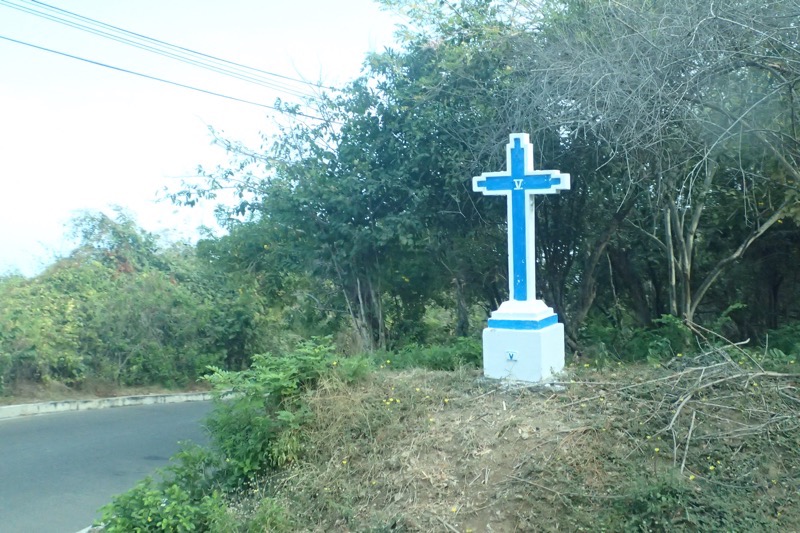 Our first stop in Cartagena today was up the mountain that overlooks the city, to La Popa Monastery. The monastery was built in the 17th century and it continues to houses a community of Augustinian monks today. On the way up the mountain were markers for the traditional Catholic Stations of the Cross, however there are 14 of them, and from my heavily indoctrinated Catholic school recollections there was only ever 12… Mercedes was unable to explain away the extra stations, so I guess that one will remain a mystery.
Our first stop in Cartagena today was up the mountain that overlooks the city, to La Popa Monastery. The monastery was built in the 17th century and it continues to houses a community of Augustinian monks today. On the way up the mountain were markers for the traditional Catholic Stations of the Cross, however there are 14 of them, and from my heavily indoctrinated Catholic school recollections there was only ever 12… Mercedes was unable to explain away the extra stations, so I guess that one will remain a mystery.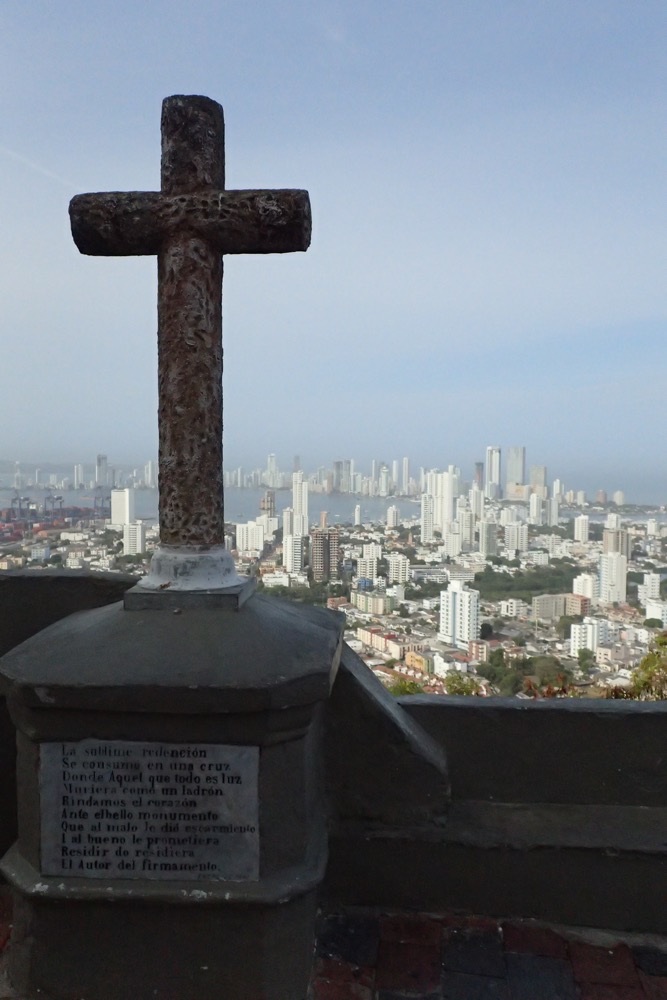 The view over Cartagena.
The view over Cartagena.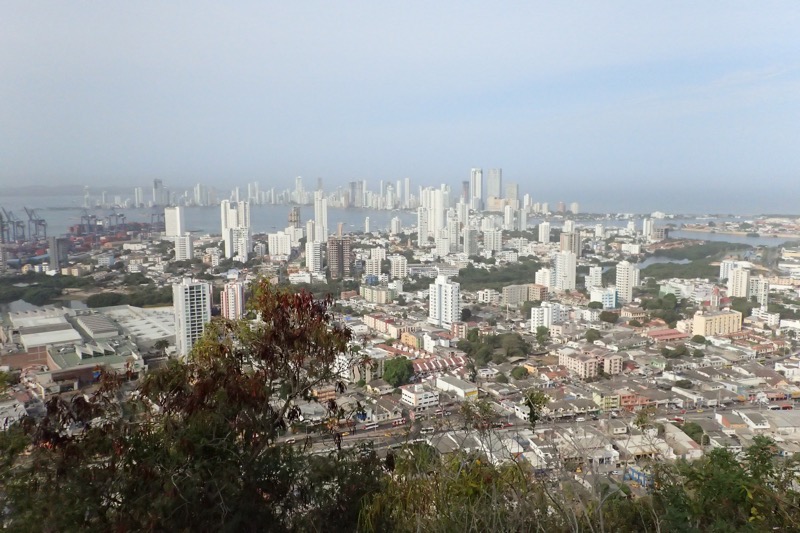 Steps up to La Popa.
Steps up to La Popa.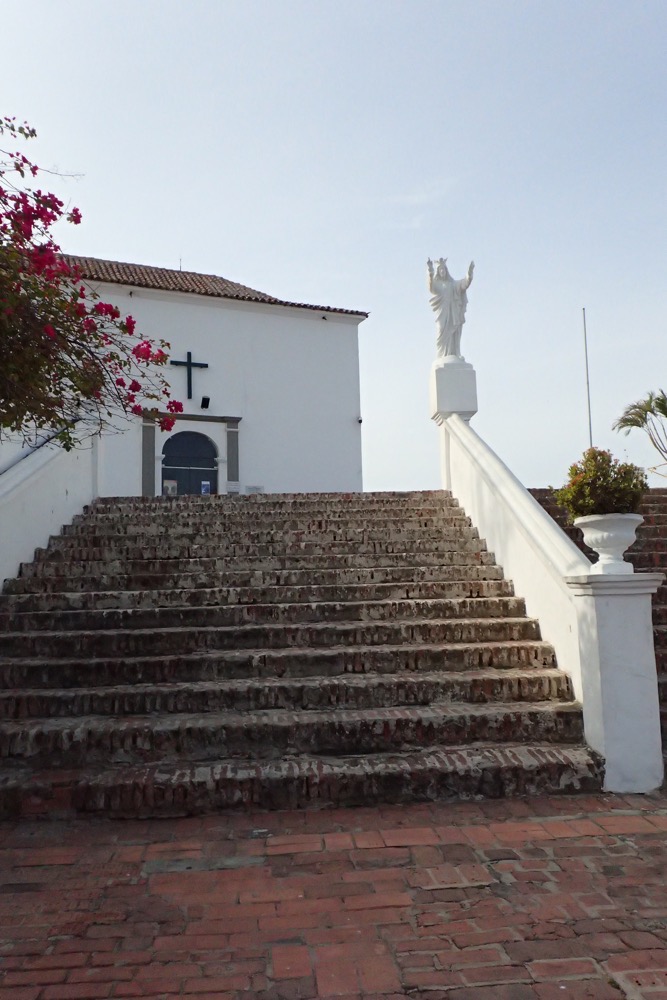
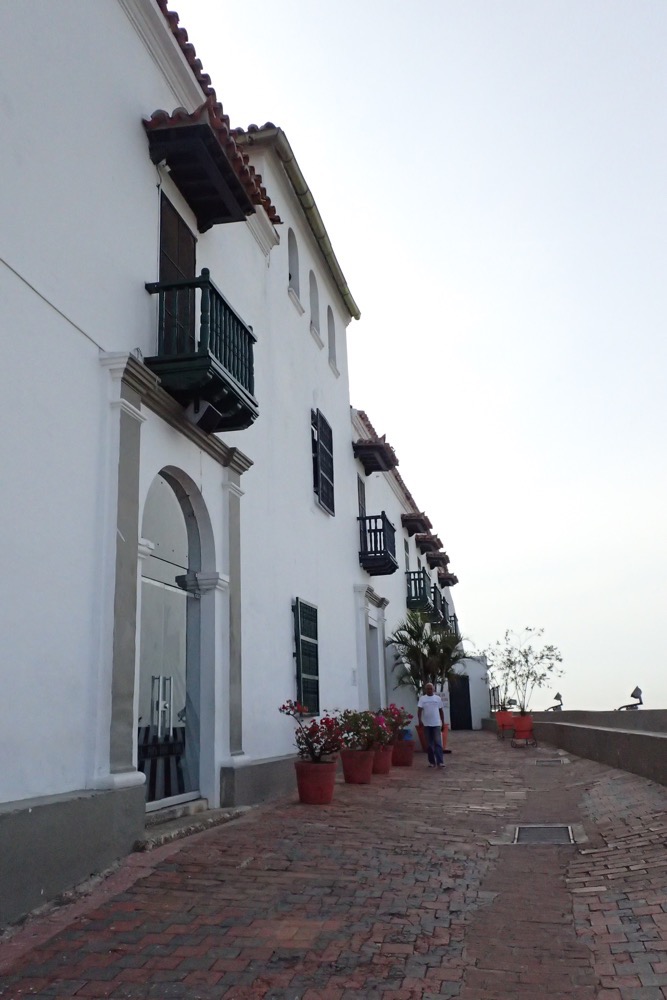
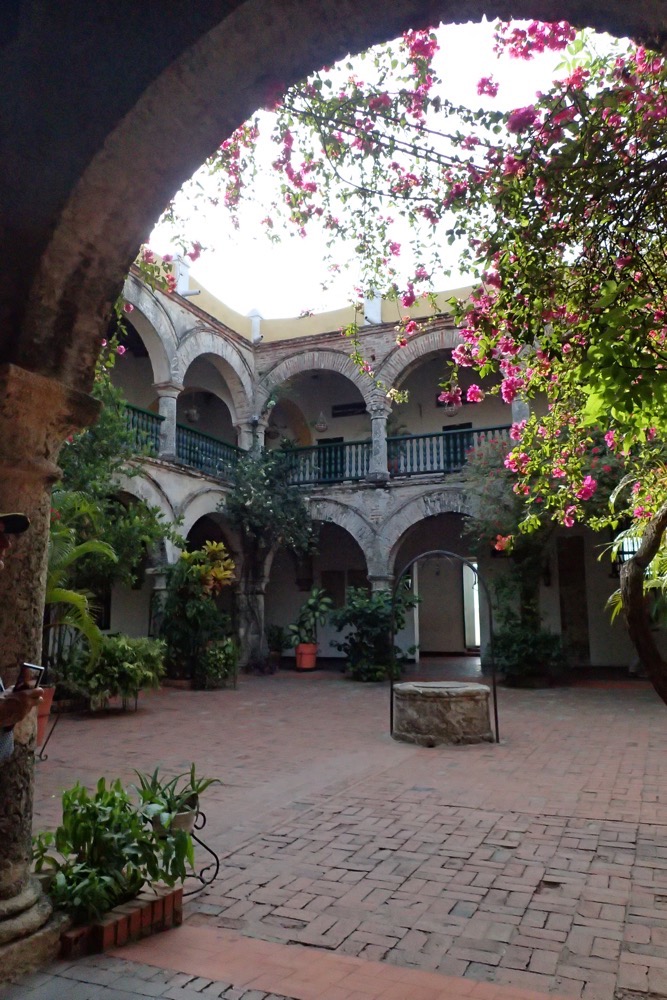 This lovely cloistered courtyard has been cleverly designed to capture rainwater and funnel it to an enormous underground water cistern… the pillars of the courtyard are hollow, and water flows down through the pillars into the cistern for later use, as the subterranean water here is too salty to use for traditional wells.
This lovely cloistered courtyard has been cleverly designed to capture rainwater and funnel it to an enormous underground water cistern… the pillars of the courtyard are hollow, and water flows down through the pillars into the cistern for later use, as the subterranean water here is too salty to use for traditional wells.
The main chapel in the monastery currently houses a beautiful carved wood and gilt altar that was originally the San Diego convent in the Old City at the shrine of La Virgen de la Candelaria. Several years ago, this altar was moved/rescued, when the chapel that it had graced was being torn down to make way for a Sofitel hotel. It’s a lovely piece, and great that it was saved – though I mostly looked at it trying to figure out how they moved it… the Madonna is standing on a silver pedestal that is apparently 40lbs of solid silver.
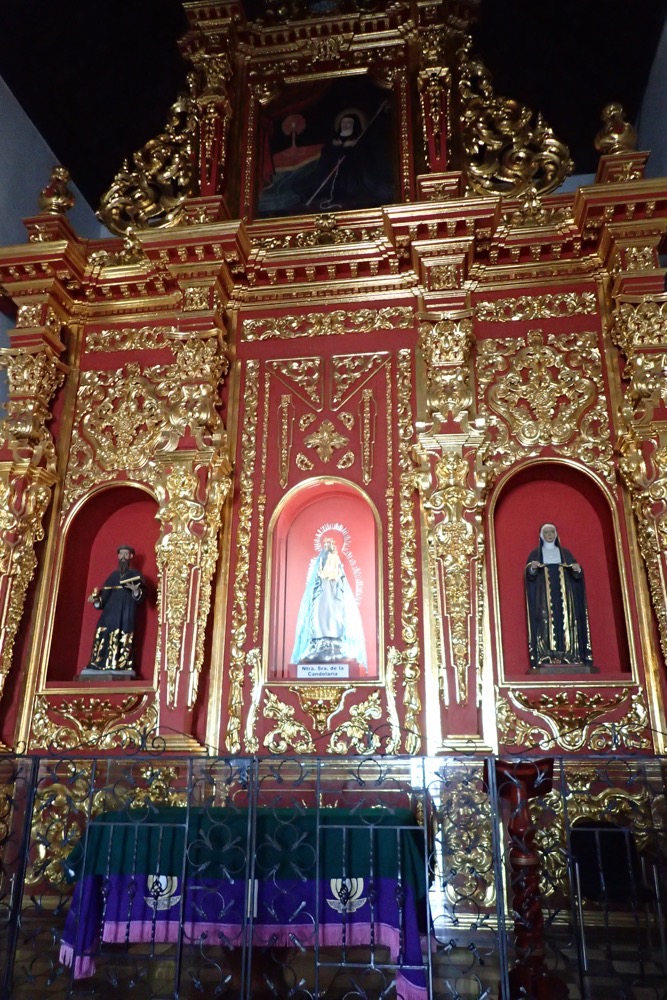 Every year wealthy local women make the Madonna new clothing and there is a room here dedicated to her old clothes. At first the garments looked very impressive, but on closer inspection, it was evident that most of the embroidery was done by machine so I didn’t even bother taking a photo of any of it. #embroiderysnobs
Every year wealthy local women make the Madonna new clothing and there is a room here dedicated to her old clothes. At first the garments looked very impressive, but on closer inspection, it was evident that most of the embroidery was done by machine so I didn’t even bother taking a photo of any of it. #embroiderysnobs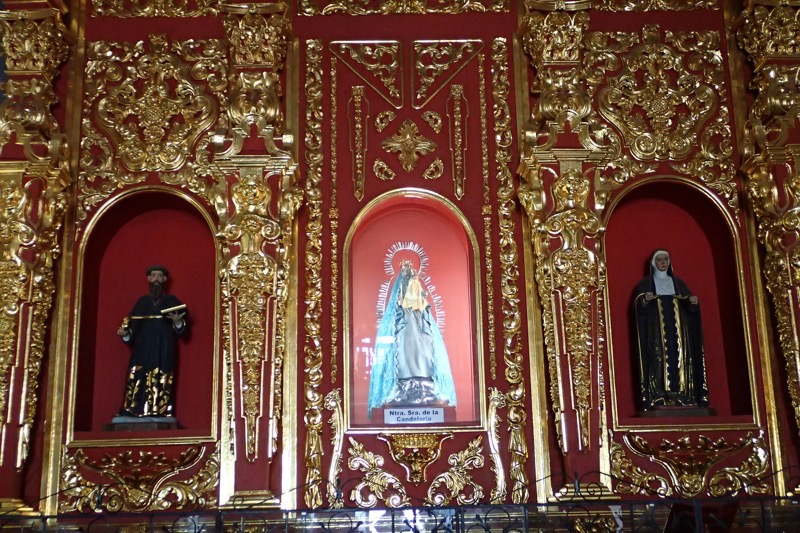 There is a story here that the local pagan Karib and Calamari Indian people worshiped Buziraco, the devil, in the form of a golden goat, and the friar who wanted to build the monastery and the shrine to La Virgen de la Candelaria confronted the devil and his worshippers by throwing the golden goat off the side of the mountain. The devil retaliated with hurricanes and storms until the church was completed, at which point the devil relented and moved deeper into the continent of South America leaving Cartagena alone. The city actually experiences no storms, no earthquakes, and no hurricanes of any sort. This weird diorama at the monastery depicts the native indians worshipping their golden goat… Mercedes, our guide, told us this story was highly unlikely, stating: “Who ever heard of a Catholic priest throwing away gold?”
There is a story here that the local pagan Karib and Calamari Indian people worshiped Buziraco, the devil, in the form of a golden goat, and the friar who wanted to build the monastery and the shrine to La Virgen de la Candelaria confronted the devil and his worshippers by throwing the golden goat off the side of the mountain. The devil retaliated with hurricanes and storms until the church was completed, at which point the devil relented and moved deeper into the continent of South America leaving Cartagena alone. The city actually experiences no storms, no earthquakes, and no hurricanes of any sort. This weird diorama at the monastery depicts the native indians worshipping their golden goat… Mercedes, our guide, told us this story was highly unlikely, stating: “Who ever heard of a Catholic priest throwing away gold?”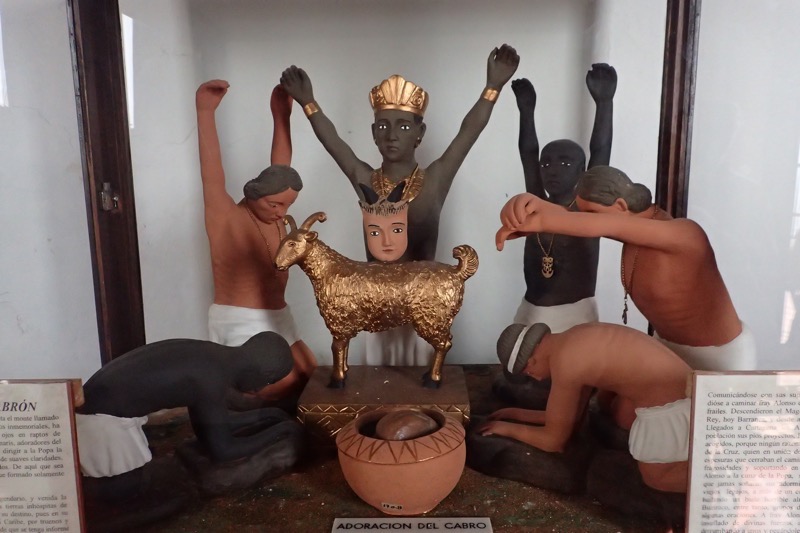
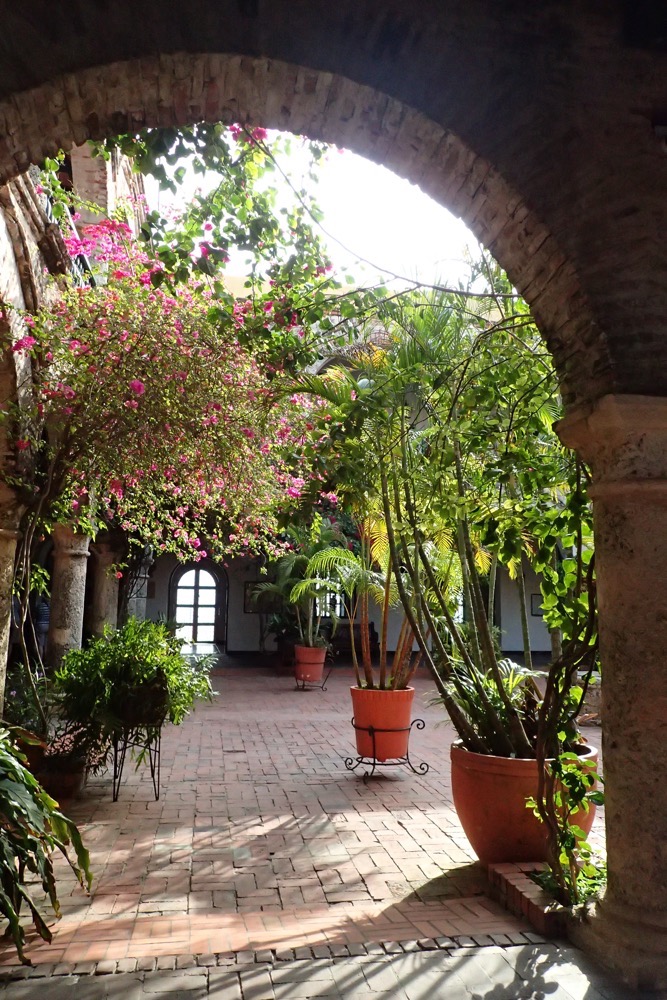
From the Monastery we made a drive around the Baluarte de Santa Santo Domingo, the Castillo de San Felipe de Barajas and the city’s walled fortifications. As the city gained in prosperity, it became a target for pirates and corsairs (privateers working under the authority of the French or English kings), and “Red Beard, Black Beard, Blue Beard… all the ‘Beards came here to pillage the city.” according to Mercedes. So the city set about building a fortress, with walled compounds and castles, to protect the city from the marauders. About 13kms of the original walled fortifications that protected Cartagena still exist and they encircle the Old City which contains Cartagena’s colonial heritage district.
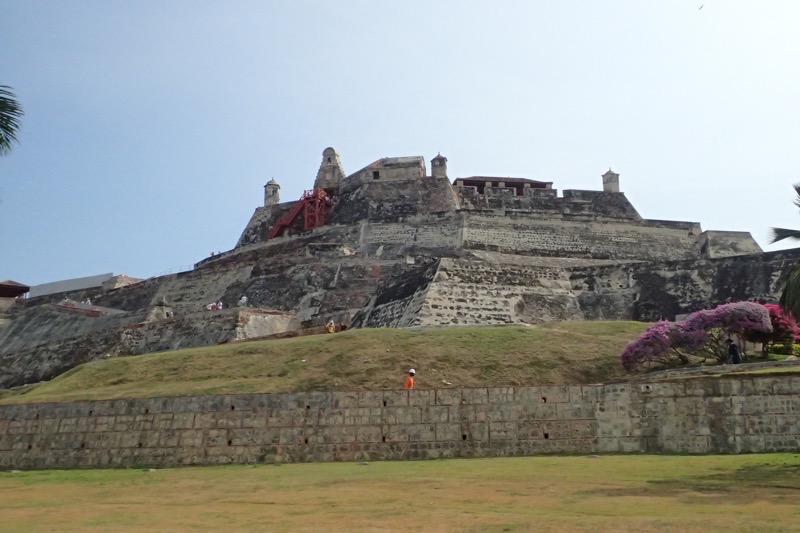
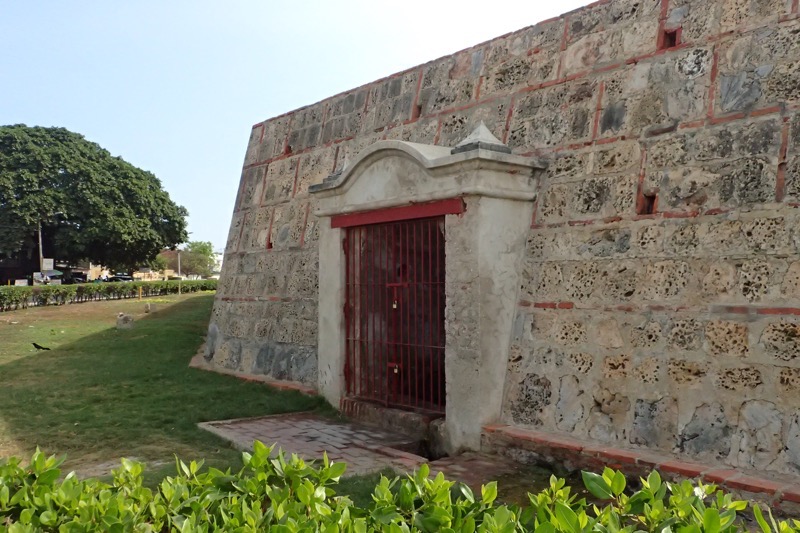
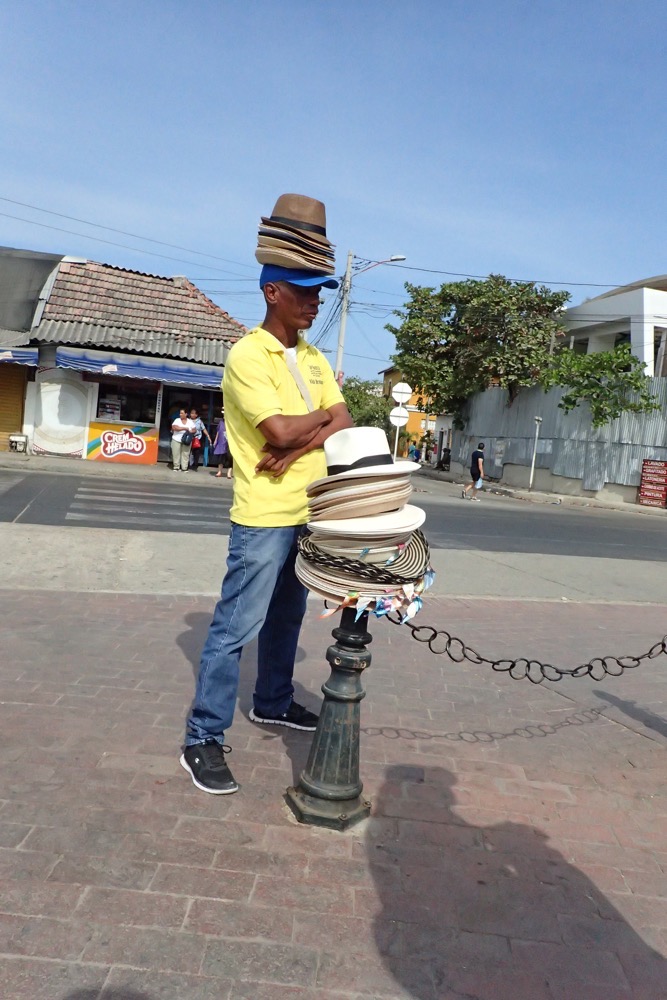
One thing that amused and confused me today in Cartagena, was the traffic. Congestion was almost at BLT (Brisbane Level Traffic – which of course is a known world standard for complete traffic clusterfucks), and our guide told us, “There are 17 traffic lights in Cartagena, and the rest of the time we play chicken… though with the big bus, we play turkey.” And that seemed about accurate. The traffic was almost as congested as home, but with and added chaos that is usually associated with Asian cities, thrown in. When we got to the top of the monastery first thing this morning, one of the things I noticed when observing the roads from above, was the completely congested main thoroughfares… and the literally dead empty side streets running parallel to those. Seriously? None of the people trying to make their way through the traffic were rat running the back streets – I was amazed as I watched vehicles moving into the mess when they could have stayed on the quiet neighbourhood streets and avoided all of it. This Brisbanite has no idea why they persisted in using the main roads and just making the traffic jams worse when they could have stayed in the backstreets and got to their destinations much quicker?! 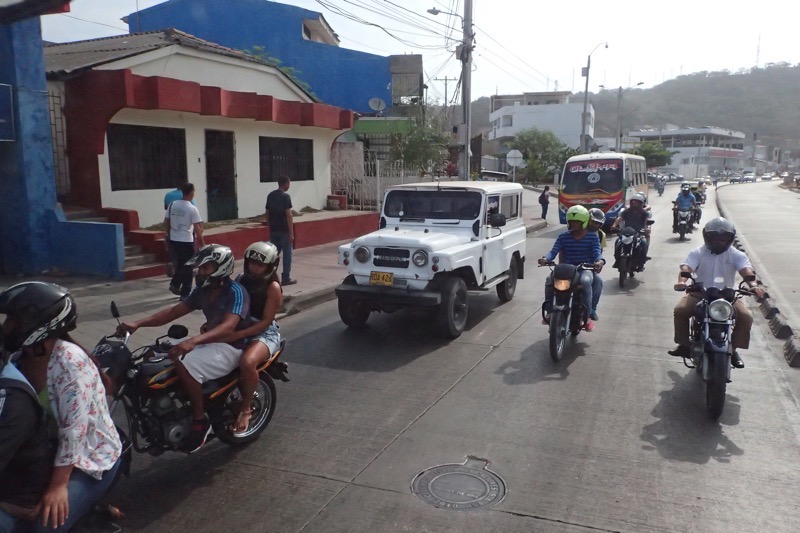 Oh, and nostalgically, I must have seen about 20 old G60 Nissan Patrols today. 🙂 Quite unexpected and not sure why, but they seemed to be everywhere, when you never see them at home anymore. The G60 seems to be an old work horse of choice here and it was lots of fun spotting them in the traffic. BigSal and Trish will recognise them from the air vents under the front windscreen 🙂
Oh, and nostalgically, I must have seen about 20 old G60 Nissan Patrols today. 🙂 Quite unexpected and not sure why, but they seemed to be everywhere, when you never see them at home anymore. The G60 seems to be an old work horse of choice here and it was lots of fun spotting them in the traffic. BigSal and Trish will recognise them from the air vents under the front windscreen 🙂
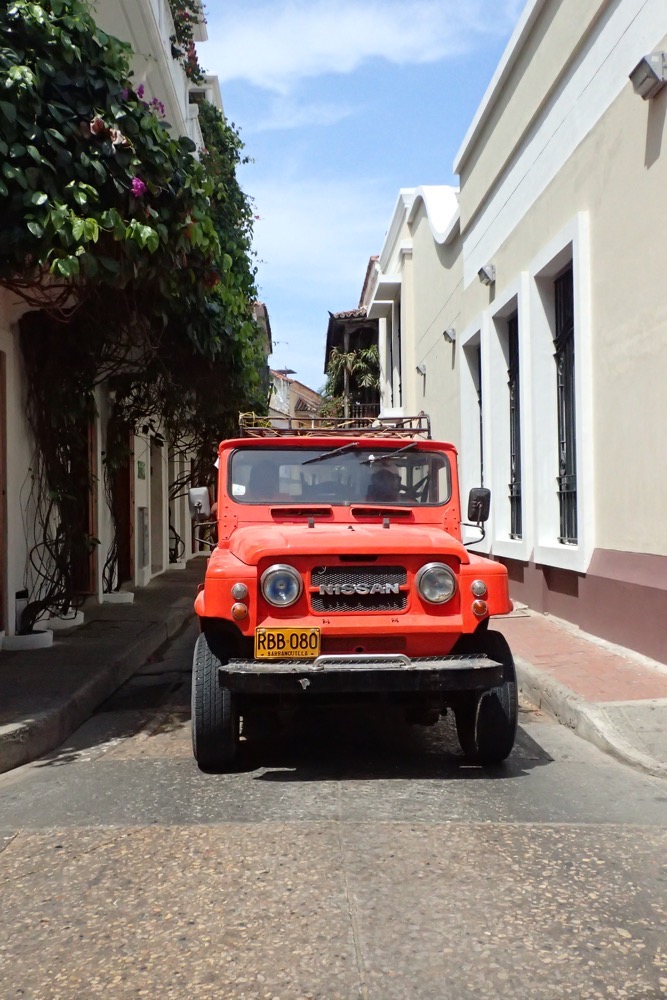
After checking the city was properly fortified against piratical invasion, we were ferried (bused) to an area of the fort wall that has been repurposed for tourist shopping. Here we found all manner of textiles, bags, hats, hammocks (I really wanted to buy one – but I haven’t strung up the two Mexican hammocks I already have!), leather goods, emeralds, sarongs, clothing, t-shirts, souvenirs and all sorts of things. About the only thing that the shopping had in common here is that EVERYTHING was in bright rainbow colours. Aunty Mary and I both came away with lovely satchel tote bags that would be completely at home in a gay pride parade… bright pink and rainbow colours, I love it.
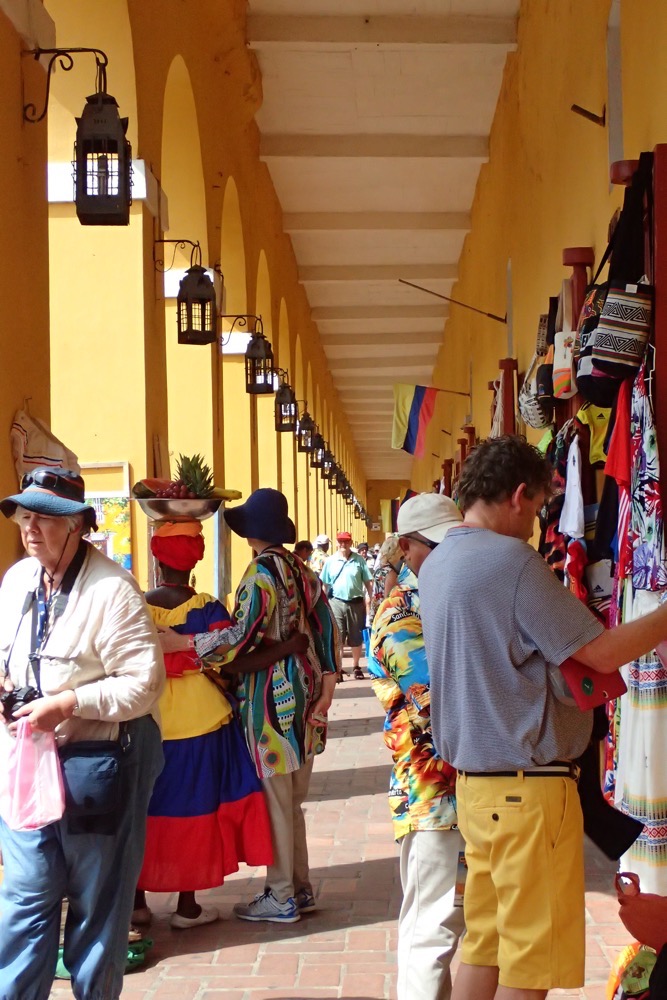 Shopping is a very happy, colourful experience here, excepting where the ladies in the traditional dresses kept coming up to us, and draping their arms around us saying we could take pictures with them and their fruitbaskets for $1. I don’t mind them making money in this way – but please don’t bump into or touch me while I am in a strange country… it makes me immediately do a complete audit of all my pockets and my bag to ensure I still have my wallet and my camera! When playing tourist in a place like Columbia (or Rio or Buenos Aires), you are already on high alert for pickpockets without people touching and bumping into you deliberately. :/
Shopping is a very happy, colourful experience here, excepting where the ladies in the traditional dresses kept coming up to us, and draping their arms around us saying we could take pictures with them and their fruitbaskets for $1. I don’t mind them making money in this way – but please don’t bump into or touch me while I am in a strange country… it makes me immediately do a complete audit of all my pockets and my bag to ensure I still have my wallet and my camera! When playing tourist in a place like Columbia (or Rio or Buenos Aires), you are already on high alert for pickpockets without people touching and bumping into you deliberately. :/ 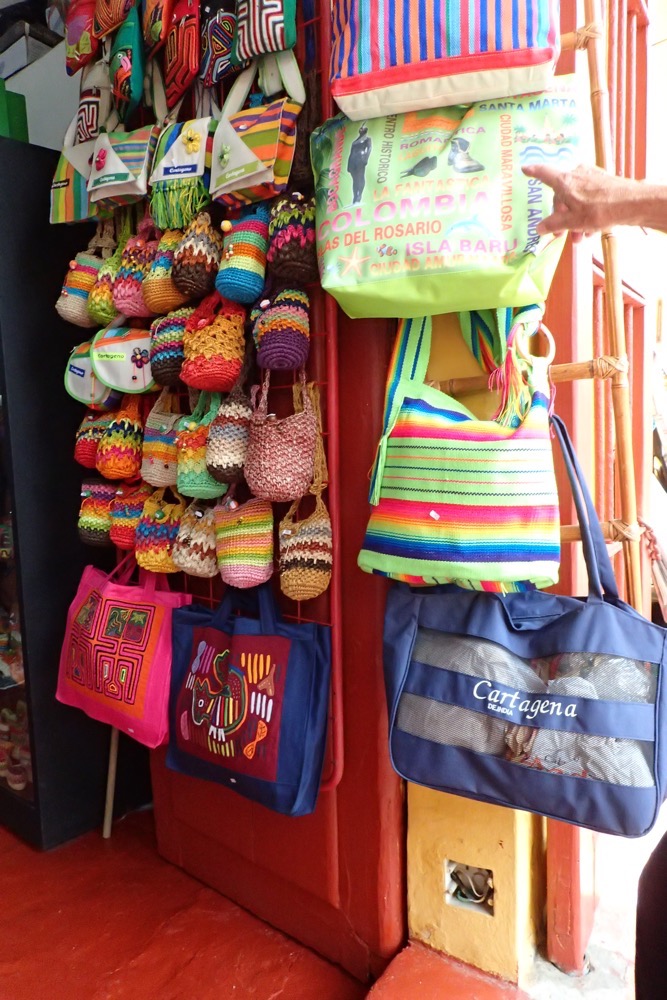 All the souvenirs are crazy colourful.
All the souvenirs are crazy colourful.
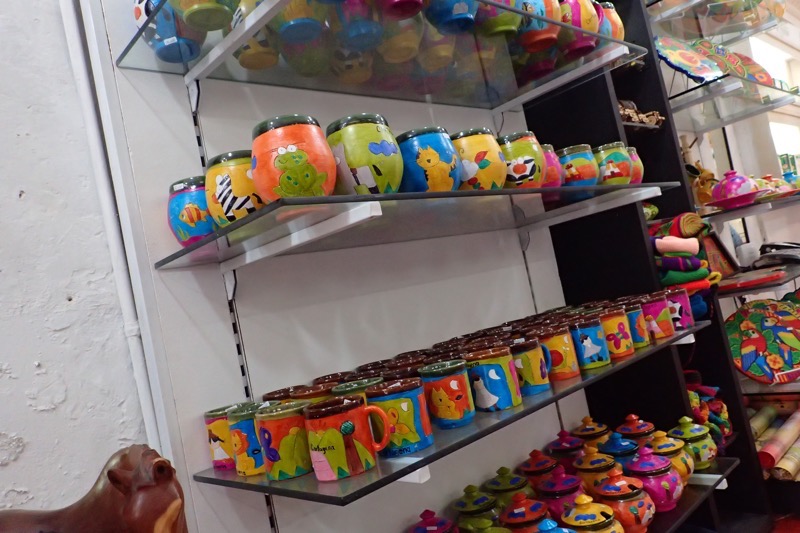
From here we started our walking tour of the Old City in the central Plaza with a monument to Simon Bolivar who led the troops in the independence movement from Spain in 1821 (I think, memory fail possible).
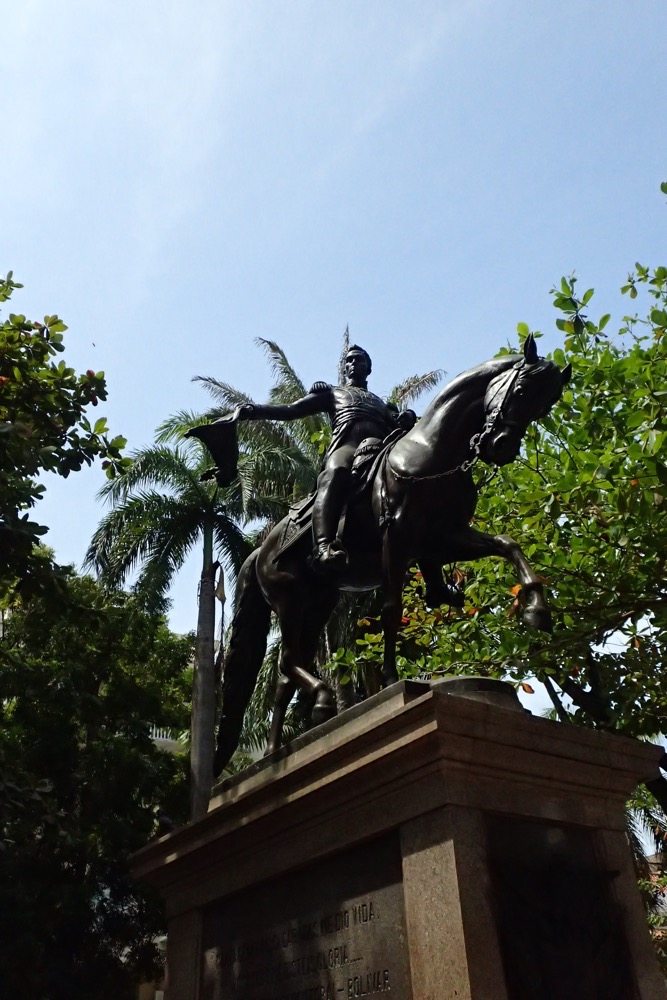
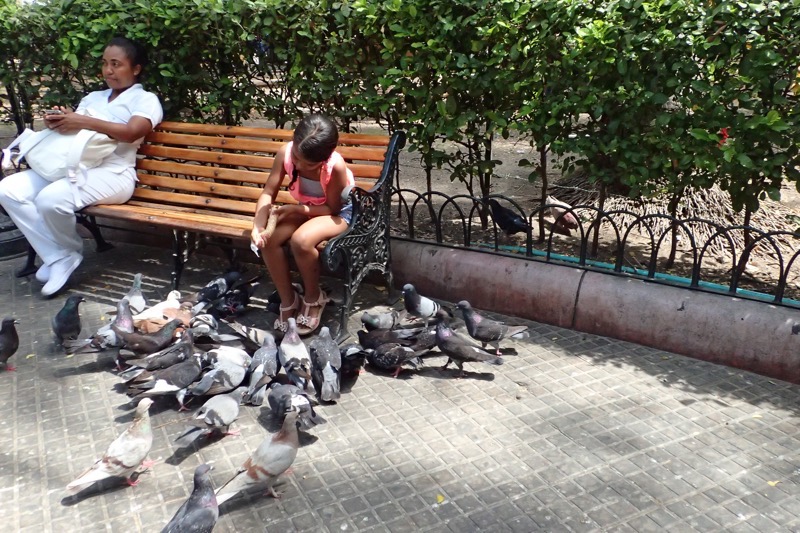 In the town centre is the Historical Museum of Cartagena, which has an impressive colonial facade from the palace museum. The facade stems from the period of the Spanish Inquisition, which of course, no one expected.
In the town centre is the Historical Museum of Cartagena, which has an impressive colonial facade from the palace museum. The facade stems from the period of the Spanish Inquisition, which of course, no one expected.
In1610, the Spanish Catholic Monarchs established the Holy Office Inquistion Court in Cartagena by royal decree of King Philip II, making it one of the three places the Inquisition was operating in South America. The Palace of the Inquisition was in operation all the way through until 1770 and the Inquisitors were only forced to leave the city when Cartagena declared independence from Spain in 1811. 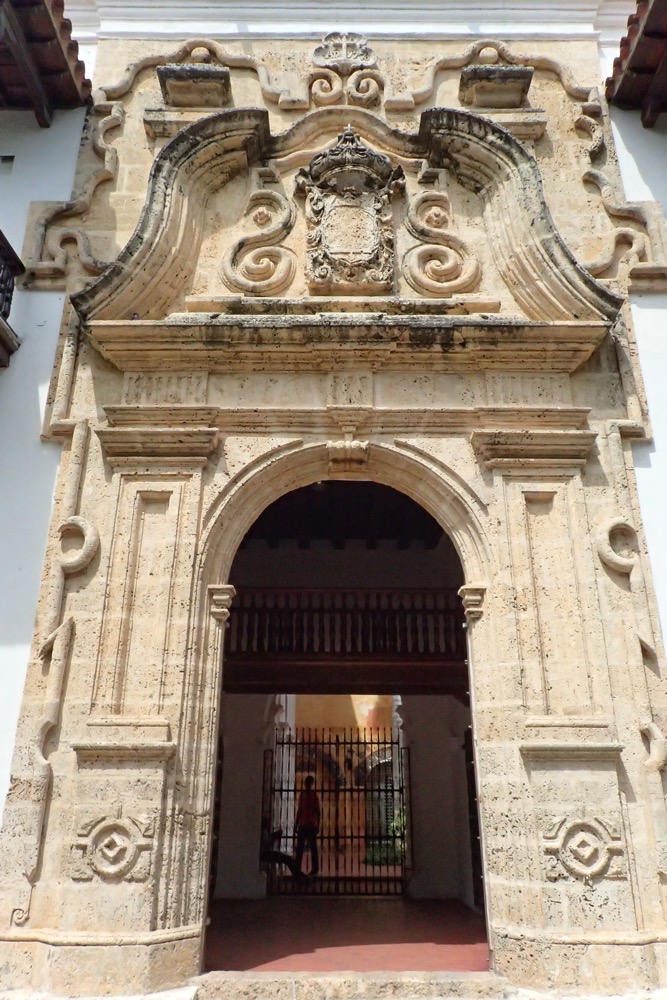 And the museum itself houses many torture instruments that the inquisition used with great creative effect… we did not have time to go through the museum unfortunately, though I heard from one of my dining companions who did go through the museum, that one was able to have their torture put onto a proxy for the right price. Yes, somehow it was acceptable to the Inquisitors to torture the slave of an intended torturee (for a sturdy donation, of course), and that slave recanting on behalf of his owner was sufficient for these sadistic priests!
And the museum itself houses many torture instruments that the inquisition used with great creative effect… we did not have time to go through the museum unfortunately, though I heard from one of my dining companions who did go through the museum, that one was able to have their torture put onto a proxy for the right price. Yes, somehow it was acceptable to the Inquisitors to torture the slave of an intended torturee (for a sturdy donation, of course), and that slave recanting on behalf of his owner was sufficient for these sadistic priests!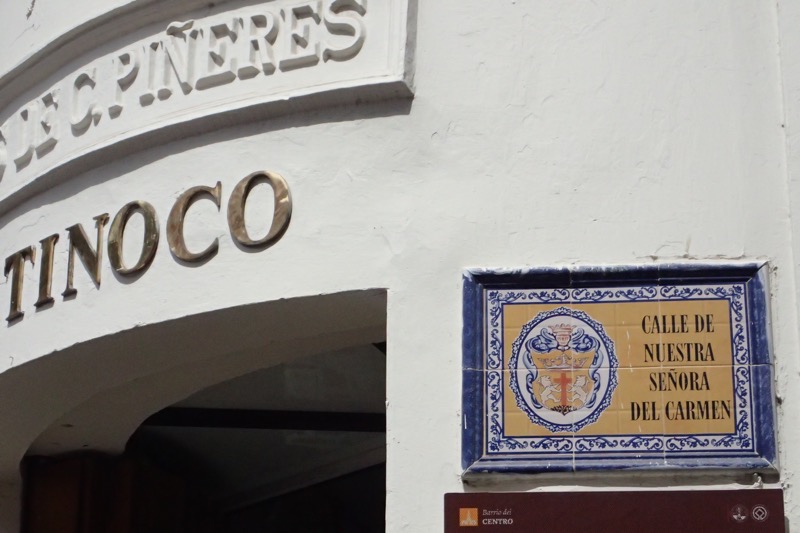 The Old City is the walled historic centre of Cartagena, which (like everything else in South America) has been listed as a UNESCO World Heritage Site. It is full of winding streets and bright colourfully painted Spanish colonial architecture. Mercedes informs us here that many of the old private homes are now all used as hotels, bars and restaurants. The homes were built to house large Catholic merchant families where it was not uncommon to have 10-15 children. The downstairs of the house would be for work, trading, selling etc., the mezzanine floor would be used to house guests – as it took 55 days to sail from Spain to Cartagena, people would come and visit for extended periods of time, so most wealthy homes had space for semi-permanent guests. The upstairs of the house would accommodate the actual family, so big enough for 10-15 people. You can see the small balconies of the mezzanine ‘guest’ floors, under the main balconies upstairs for the family.
The Old City is the walled historic centre of Cartagena, which (like everything else in South America) has been listed as a UNESCO World Heritage Site. It is full of winding streets and bright colourfully painted Spanish colonial architecture. Mercedes informs us here that many of the old private homes are now all used as hotels, bars and restaurants. The homes were built to house large Catholic merchant families where it was not uncommon to have 10-15 children. The downstairs of the house would be for work, trading, selling etc., the mezzanine floor would be used to house guests – as it took 55 days to sail from Spain to Cartagena, people would come and visit for extended periods of time, so most wealthy homes had space for semi-permanent guests. The upstairs of the house would accommodate the actual family, so big enough for 10-15 people. You can see the small balconies of the mezzanine ‘guest’ floors, under the main balconies upstairs for the family.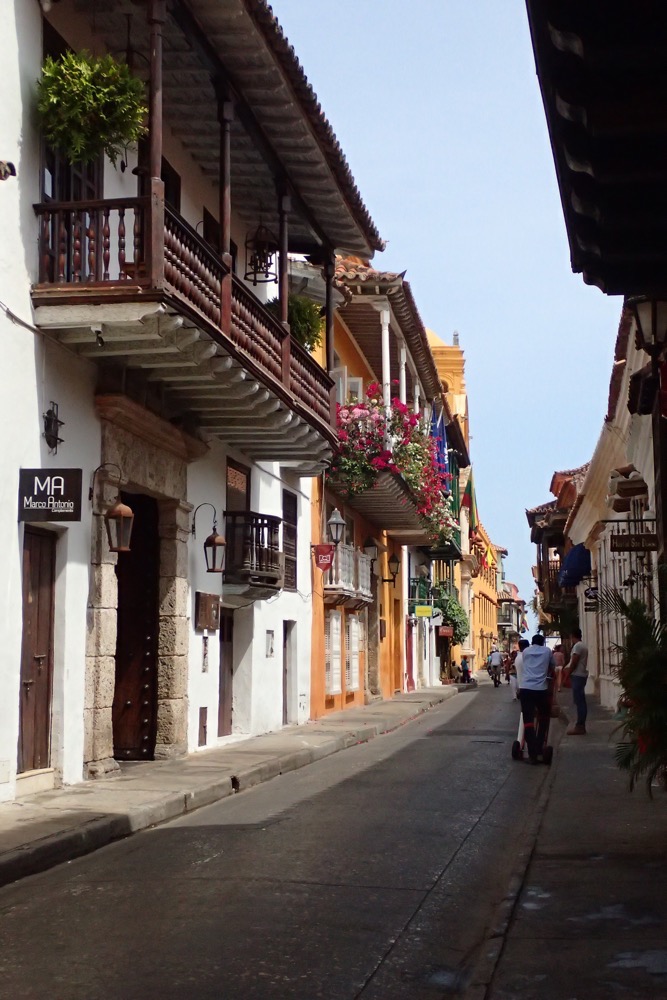
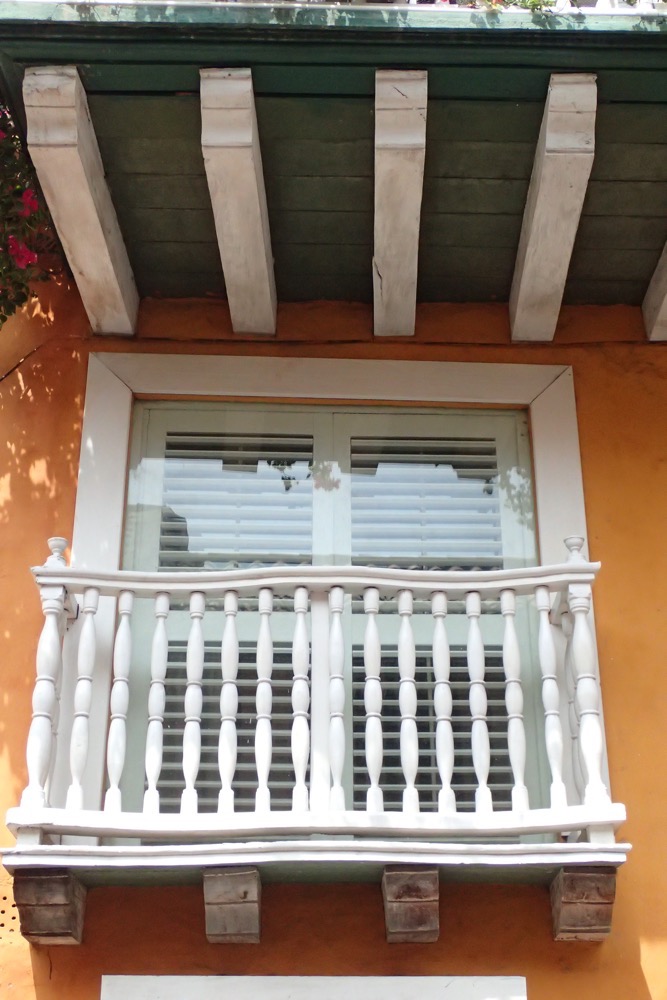 Many of these old buildings have these mezzanine balconies, original slate and stone floors, and original brickwork from the 16th – 17thC. Absolutely beautiful.
Many of these old buildings have these mezzanine balconies, original slate and stone floors, and original brickwork from the 16th – 17thC. Absolutely beautiful.
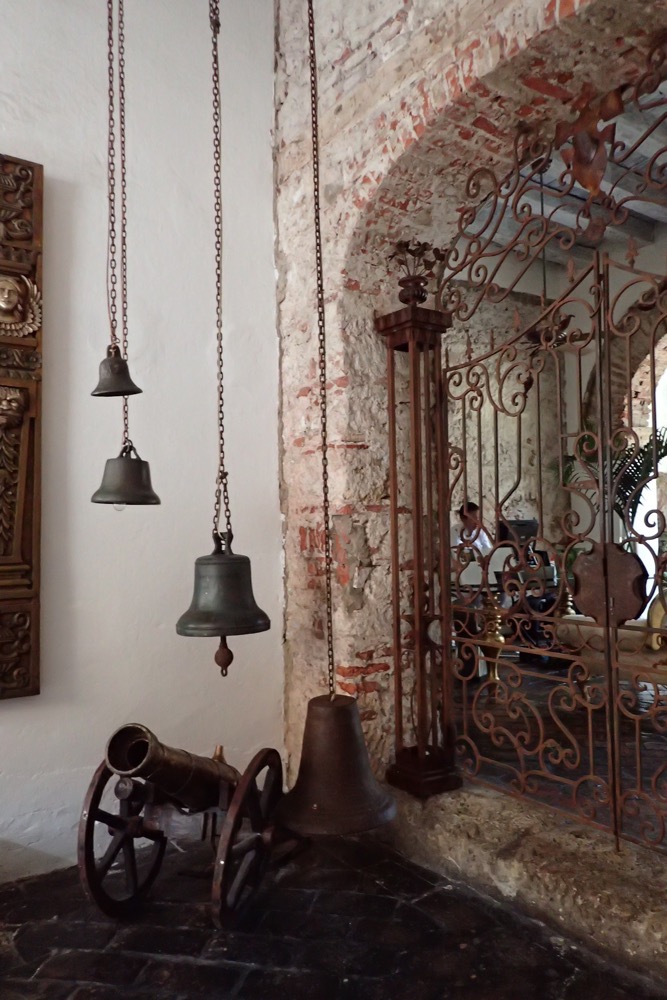
After wandering the Old City admiring the architecture for a while, we made a stop at the Cartagena Emerald Museum, which is designed to educate the tourist about the ‘superior Columbian Emeralds’, and of course flog as many emeralds as they can. It was tacky and quaint and weirdly seemed to be targeting American high school students with the plethora of strange dioramas… but I felt I would be remiss in not sharing some of the pain here.
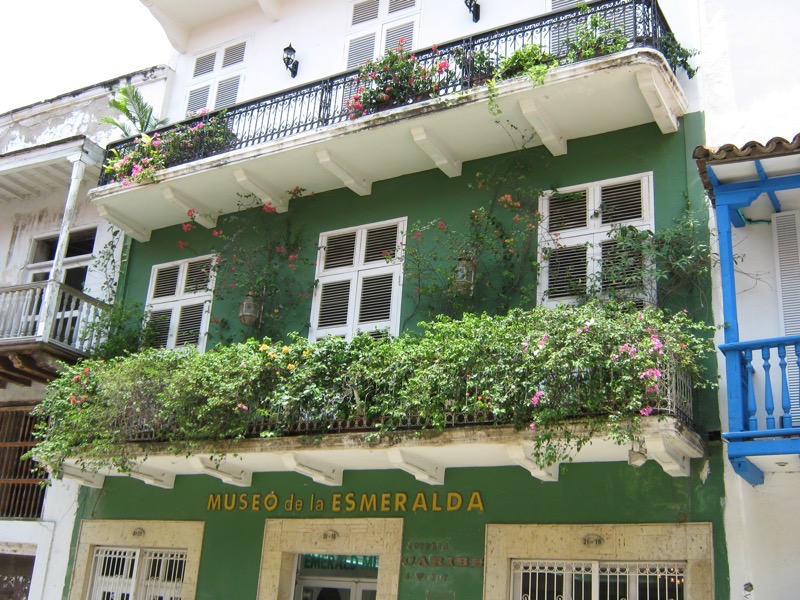
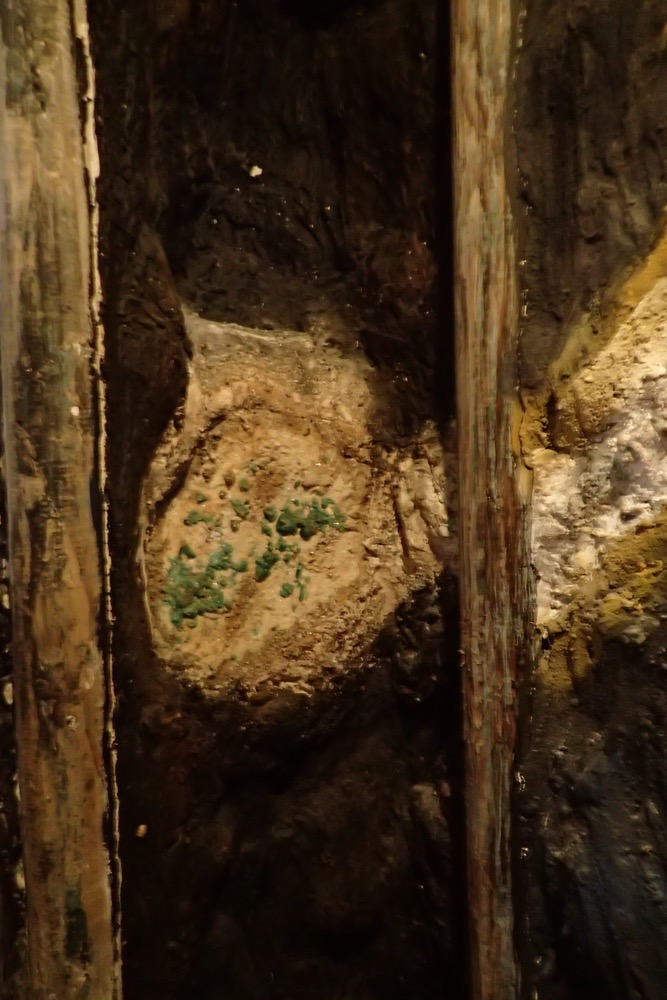
Display showing how the gems are mined – with heavy machinery and explosives, providing an interesting (propagandist?) counterpoint to those documentaries we have all seen of poverty stricken people dredging through sludge from the mine leavings looking for the left over emeralds.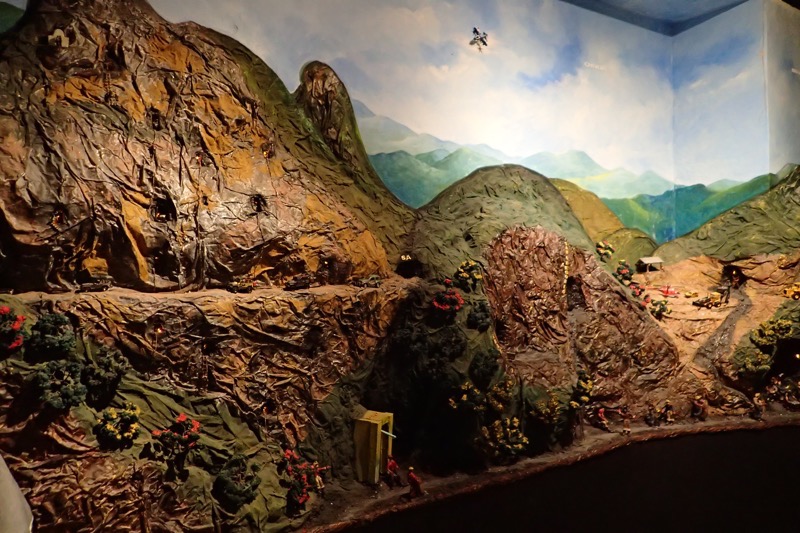
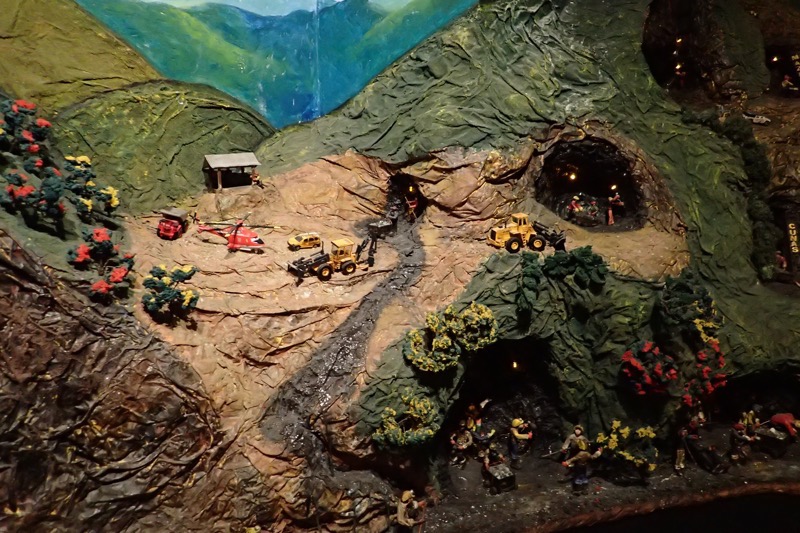 A diorama depicting the El Dorado Ceremony – “When the Muisca chief passed away, his nephew was acknowledged as the new chief by this people. During a ceremony priests undressed the chief and anointed him with a viscous mixture of soil and gold powder. Then the chief would get on a raft with large amounts of gold and emeralds at his feet. Other chiefs decked with feathers, crowns, armlets, pendants etc carried an offering and sat on the raft. As soon as the raft left the edge of the water, whistles, trumpets flutes and songs would play until the raft reached the centre of the lake. The chief would throw himself into the water with his offerings and the rafter would go back to honour the new heir who was now recognised as the chief and prince.” Not sure what is happening there? Does the nephew get sacrificed for the actual son of the chief to take his place?
A diorama depicting the El Dorado Ceremony – “When the Muisca chief passed away, his nephew was acknowledged as the new chief by this people. During a ceremony priests undressed the chief and anointed him with a viscous mixture of soil and gold powder. Then the chief would get on a raft with large amounts of gold and emeralds at his feet. Other chiefs decked with feathers, crowns, armlets, pendants etc carried an offering and sat on the raft. As soon as the raft left the edge of the water, whistles, trumpets flutes and songs would play until the raft reached the centre of the lake. The chief would throw himself into the water with his offerings and the rafter would go back to honour the new heir who was now recognised as the chief and prince.” Not sure what is happening there? Does the nephew get sacrificed for the actual son of the chief to take his place?
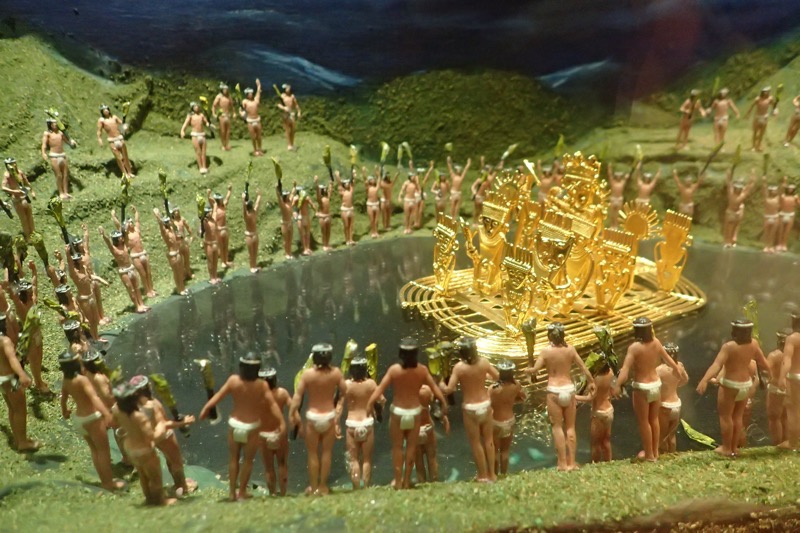 The ‘museum’ continued in an equally confusing theme full of strange little dioramas…
The ‘museum’ continued in an equally confusing theme full of strange little dioramas…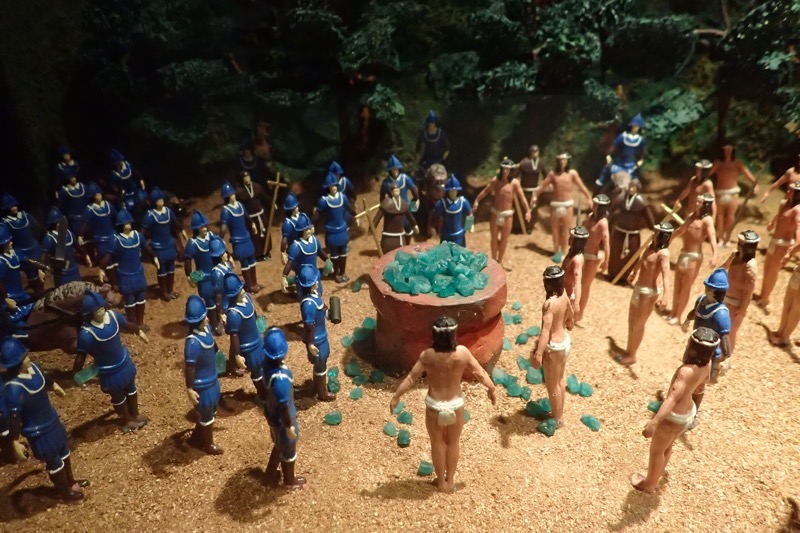
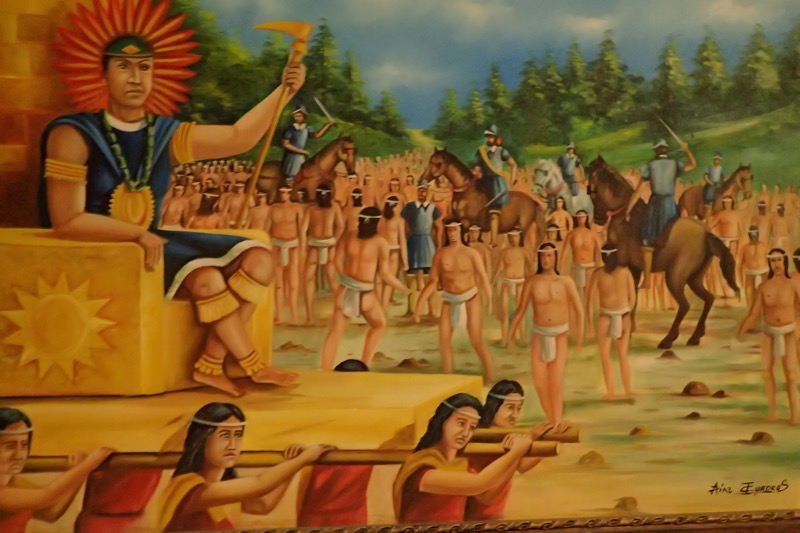 Everywhere were signs and things telling you how superior the Columbia emeralds are to those mined in other areas of the world…
Everywhere were signs and things telling you how superior the Columbia emeralds are to those mined in other areas of the world…
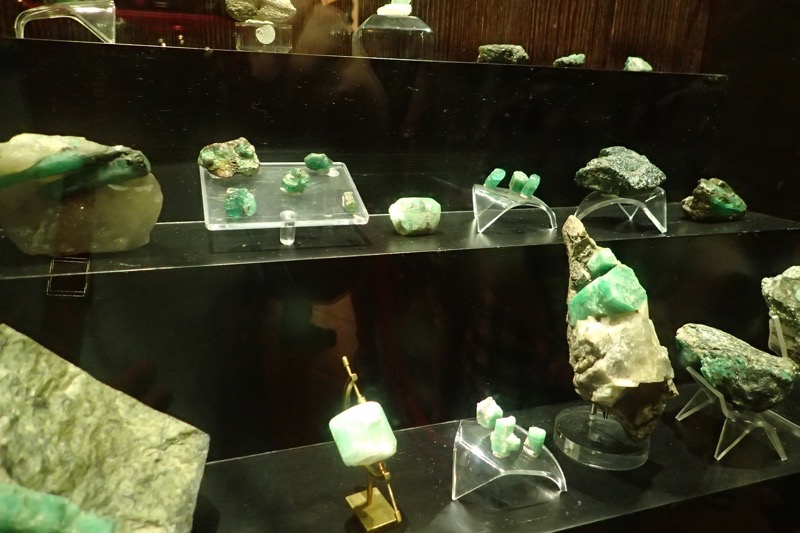
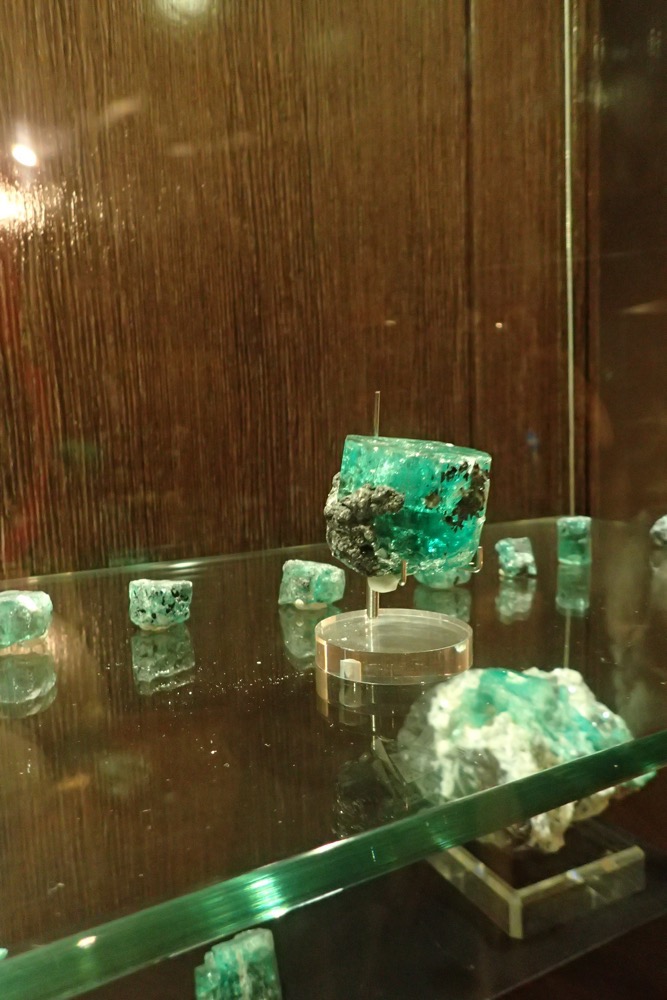 There was even a guy here hand cutting emeralds…
There was even a guy here hand cutting emeralds… 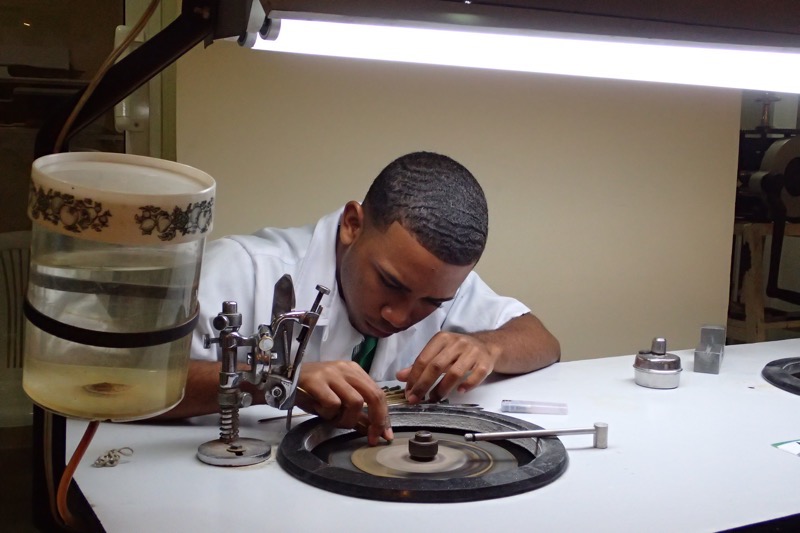
… and then of course we exited through the emerald shop attached to the museum. “Would madam like to see anything?”
“Sure. Have you got anything that isn’t green?”
In response he just went, *blink blink*, and gave me a quizzical look.
Yeah, I am not even remotely fond of emeralds at all. So my credit card was entirely safe.
Verdict on the Emerald Museum: 4/10, wouldn’t do again… just weird.
After this we were taken to another retail outlet hawking Colombia’s other famous export – coffee! Samples all round of coffee, and coffee flavoured everything, and apparently one should really try the chocolates which are – you guessed it – coffee flavoured.
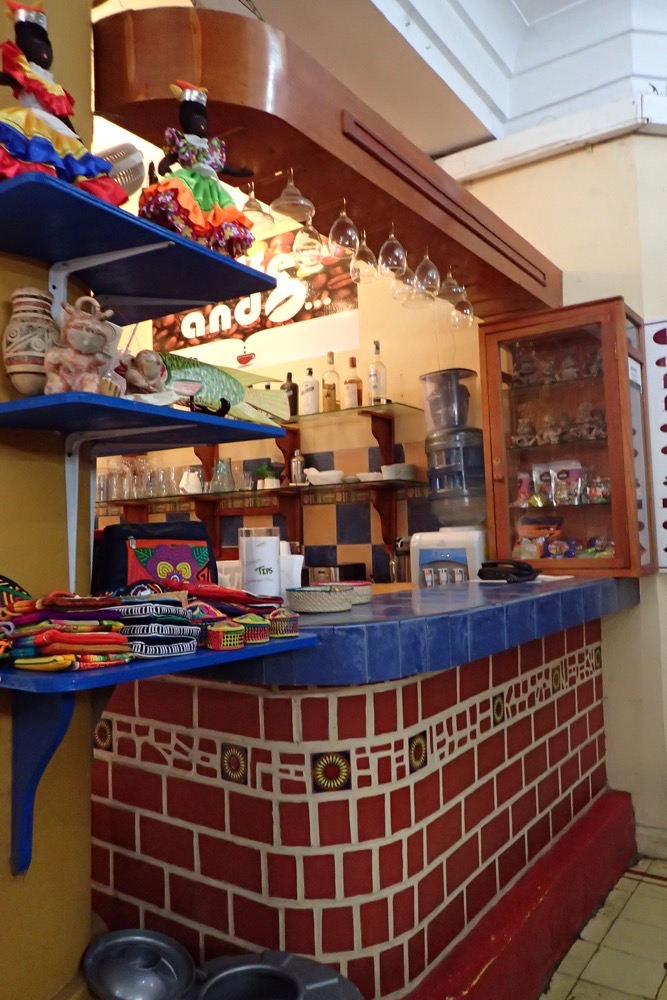
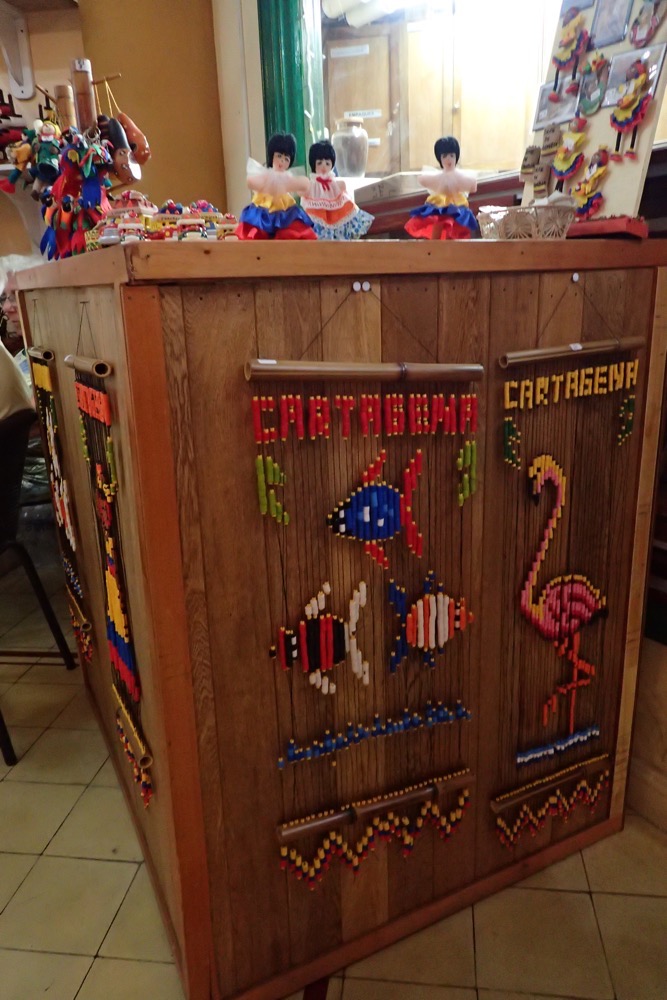
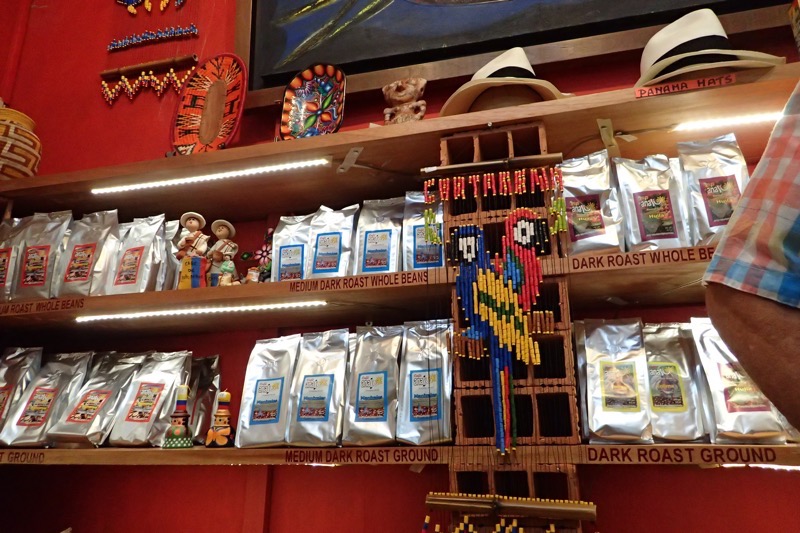 But ever being a contrary little thing – I hate coffee and don’t really like chocolate either. So I went for a wander in the streets instead of being assaulted by the coffee smells. There are lots of people selling colourful wares along the streets in the Old City. Mostly hats, coral necklaces, bags, textiles, and little wristbands that say ‘Cartagena’ seemed to be really popular – but everything is crazy colourful still.
But ever being a contrary little thing – I hate coffee and don’t really like chocolate either. So I went for a wander in the streets instead of being assaulted by the coffee smells. There are lots of people selling colourful wares along the streets in the Old City. Mostly hats, coral necklaces, bags, textiles, and little wristbands that say ‘Cartagena’ seemed to be really popular – but everything is crazy colourful still.
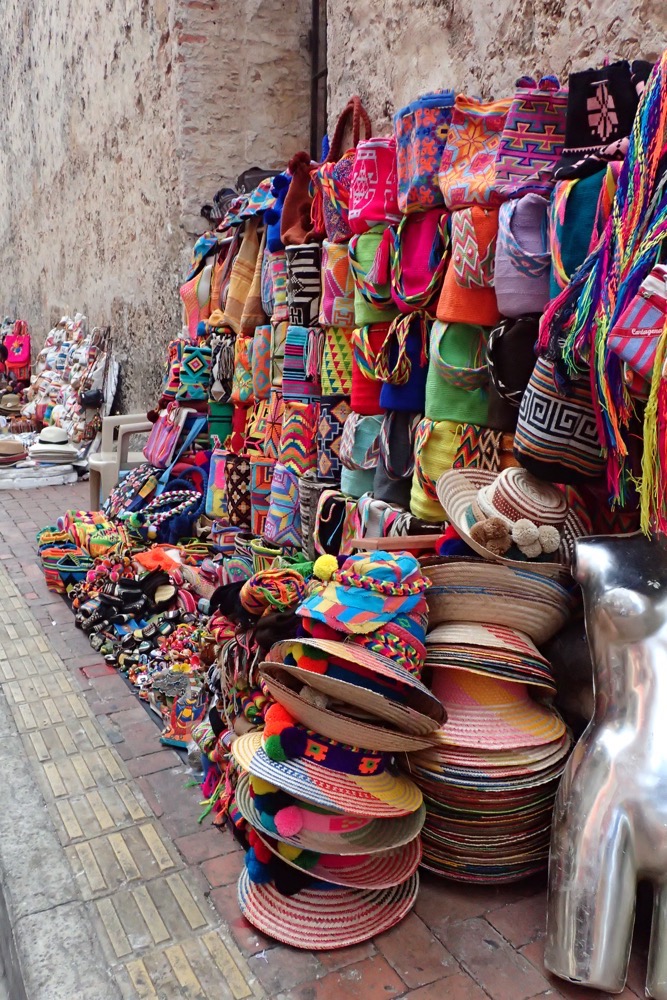
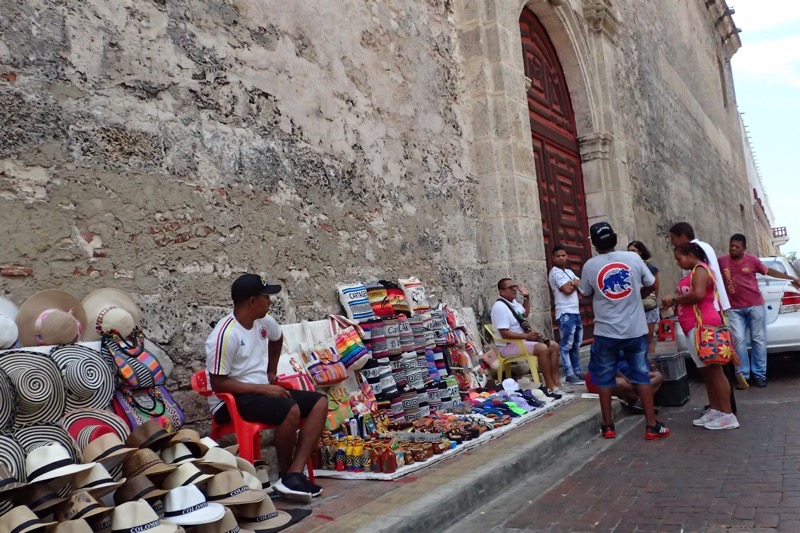 Columbia is one of the few South American countries never to be under dictatorial rule, this is in part due to the fact that members of the military are unable to vote – as we know, most dictators emerge from military coups. Military service is mandatory for 18 months for every male at 18 years of age. The only exception is where a family has a singular male child – obviously this is because if anything were to happen to that male child, there would be no ‘man in the house’ to look after the remaining family. (insert a dry futile nod to the blatant thriving patriarchy, here)
Columbia is one of the few South American countries never to be under dictatorial rule, this is in part due to the fact that members of the military are unable to vote – as we know, most dictators emerge from military coups. Military service is mandatory for 18 months for every male at 18 years of age. The only exception is where a family has a singular male child – obviously this is because if anything were to happen to that male child, there would be no ‘man in the house’ to look after the remaining family. (insert a dry futile nod to the blatant thriving patriarchy, here)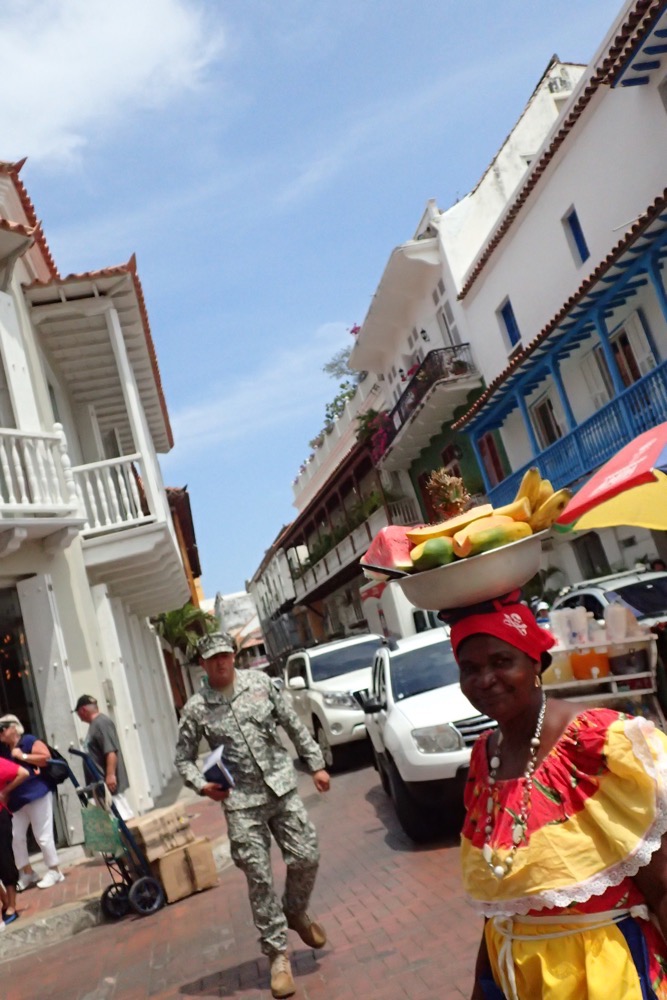
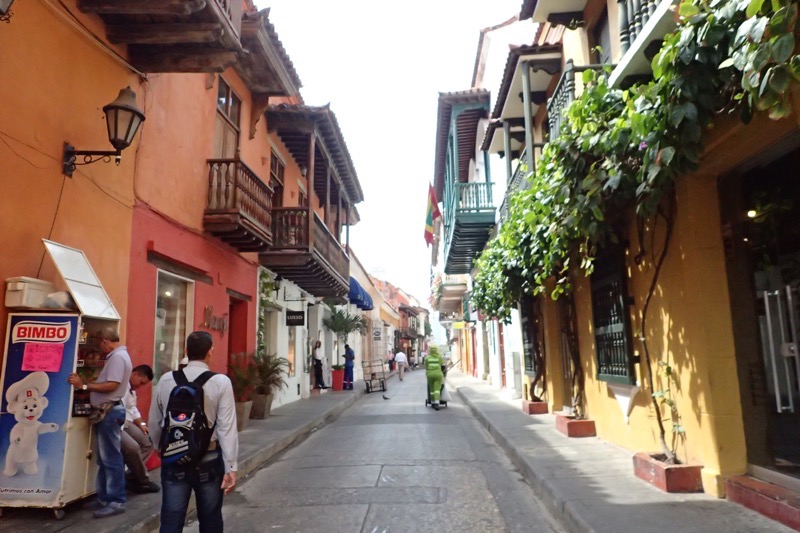
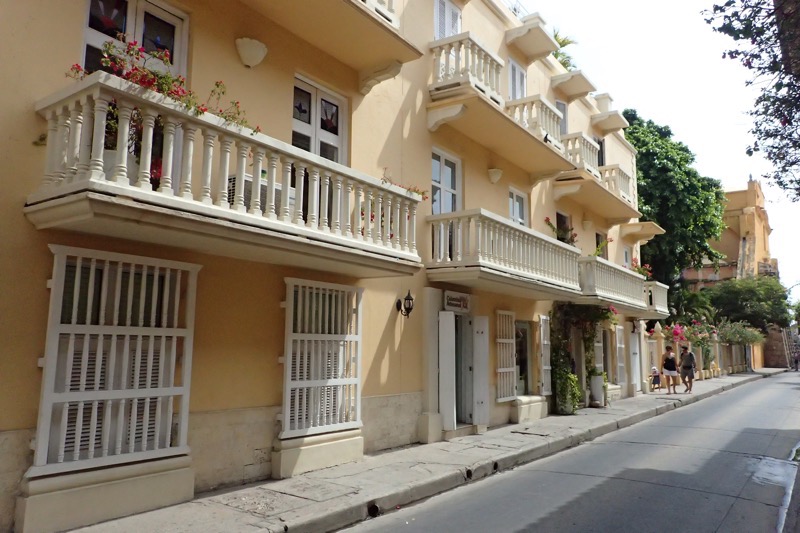
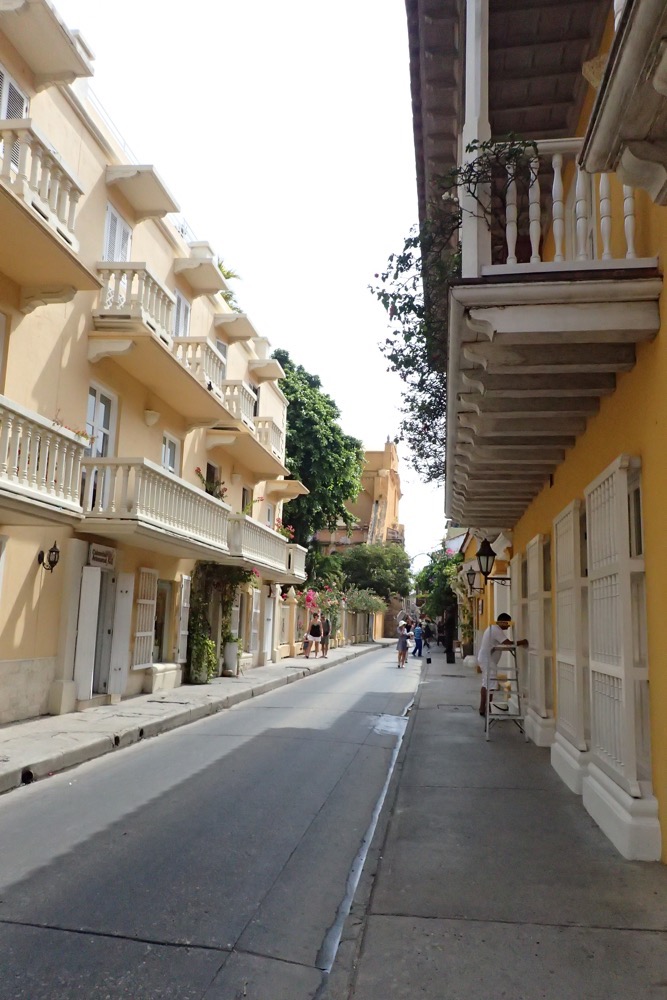
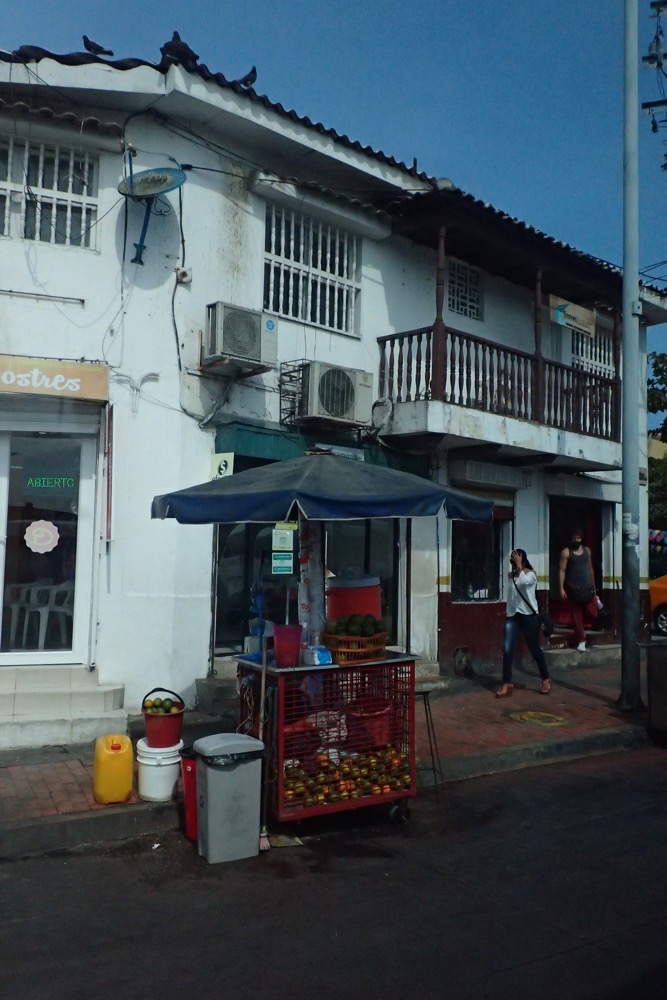 Our next visit was to the Monasterio de San Pedro Cláver, a Jesuit temple that is part of a large monastery with religious buildings that include the Cloister of San Pedro Cláver and a small archaeological museum. It was built between 1580 and 1654, and apparently the body of Saint Peter Claver is located in its main altar.
Our next visit was to the Monasterio de San Pedro Cláver, a Jesuit temple that is part of a large monastery with religious buildings that include the Cloister of San Pedro Cláver and a small archaeological museum. It was built between 1580 and 1654, and apparently the body of Saint Peter Claver is located in its main altar.
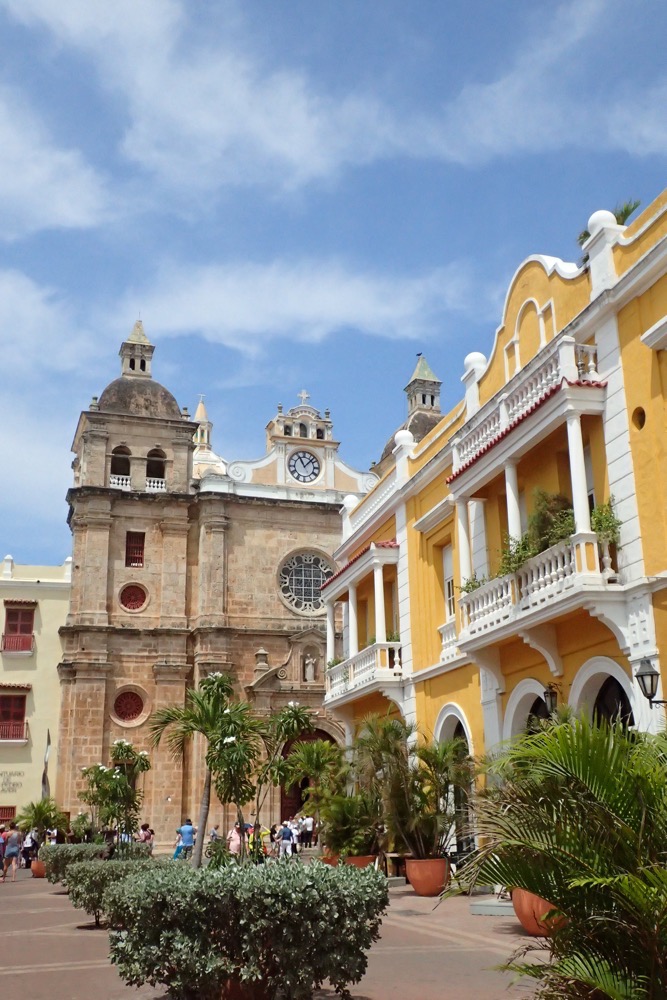
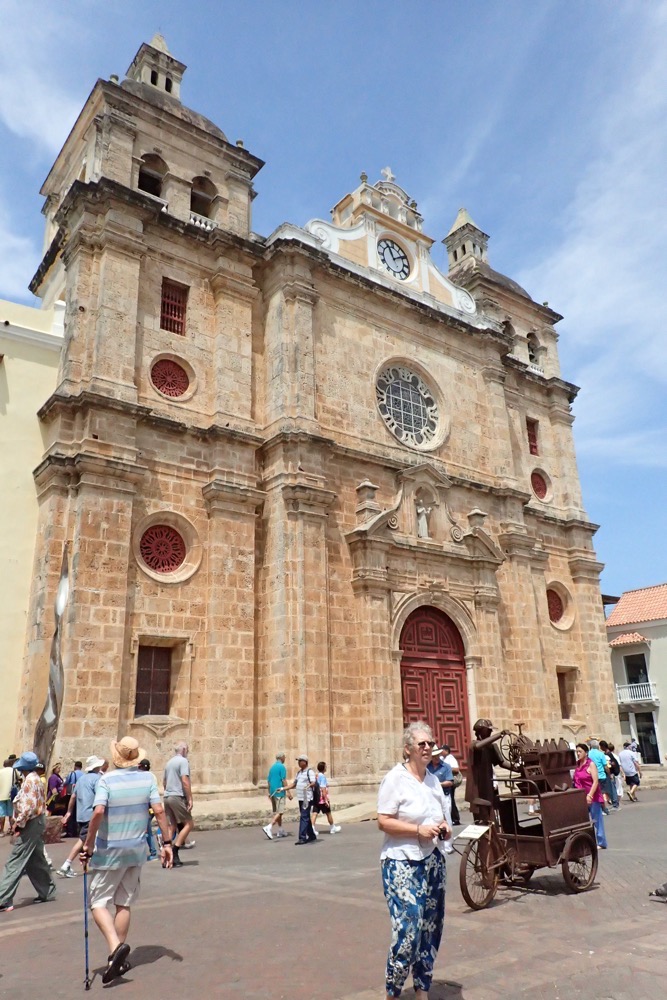 Directly in front of the church is the bronze sculpture Mujer Reclinada, (RecliningWoman) by an artist named Botero. He copped a lot of criticism for placing a naked woman directly outside the Monasterio de San Pedro Cláver, with people saying it was inappropriate for a statue of this type to be placed beside a church – his response? Have you been to the Vatican? It is covered in naked people. Touche Signor Botero.
Directly in front of the church is the bronze sculpture Mujer Reclinada, (RecliningWoman) by an artist named Botero. He copped a lot of criticism for placing a naked woman directly outside the Monasterio de San Pedro Cláver, with people saying it was inappropriate for a statue of this type to be placed beside a church – his response? Have you been to the Vatican? It is covered in naked people. Touche Signor Botero.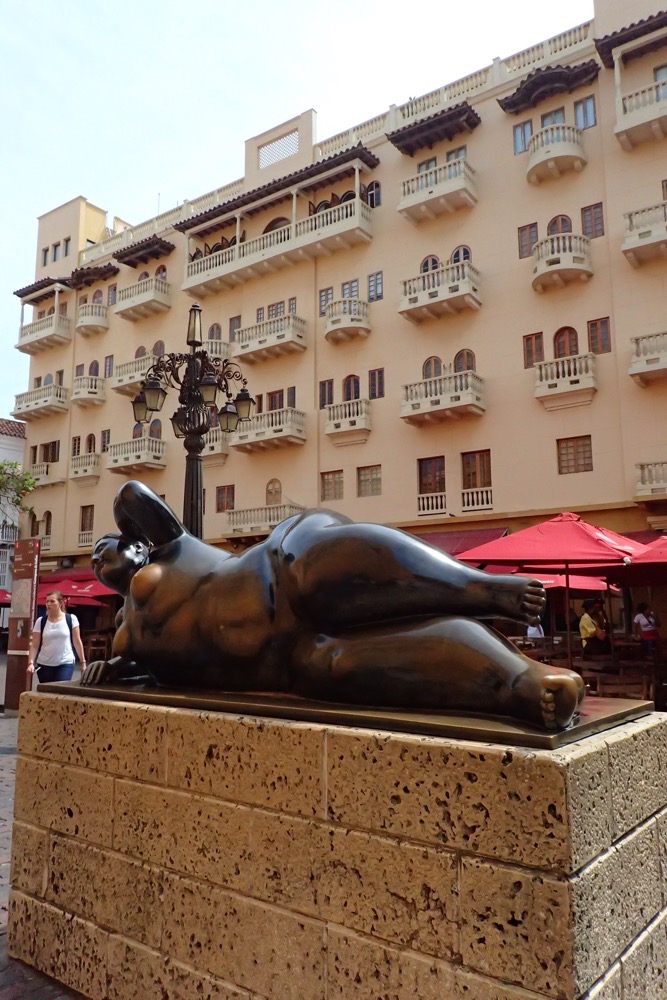 Buy your own Mujer Reclinada…
Buy your own Mujer Reclinada…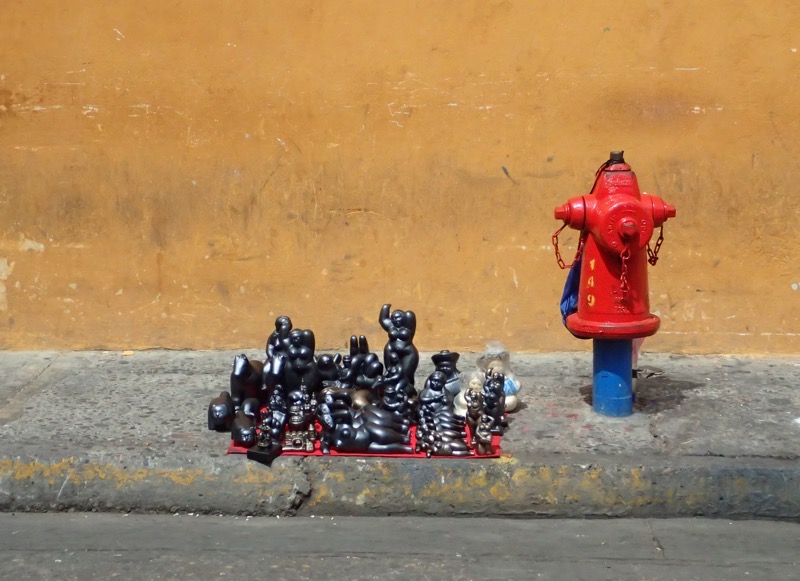
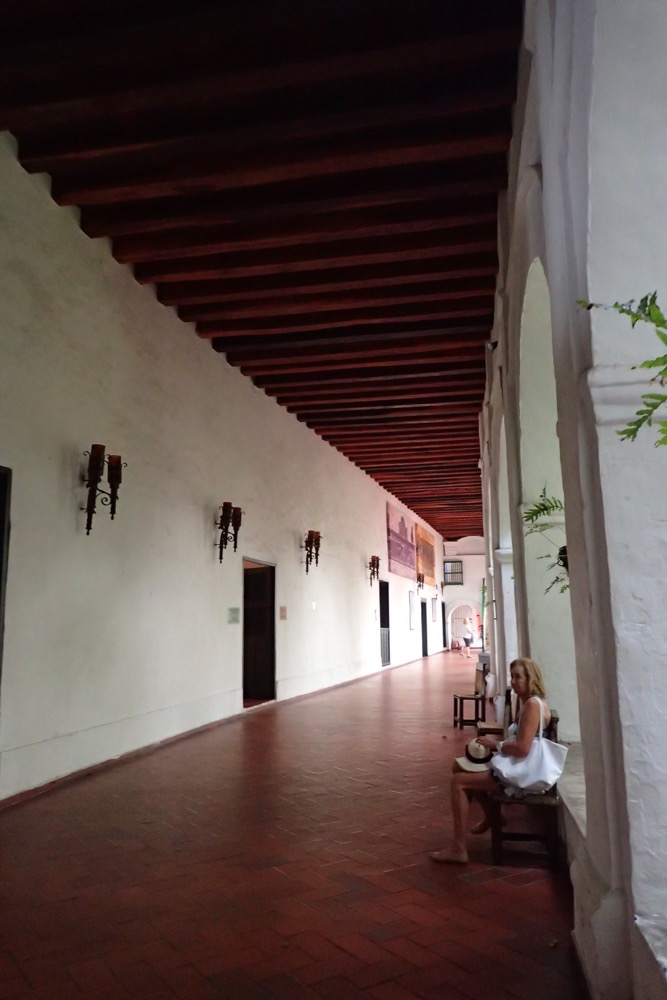 Inside is another cloistered courtyard which is also home to an active monastery community.
Inside is another cloistered courtyard which is also home to an active monastery community.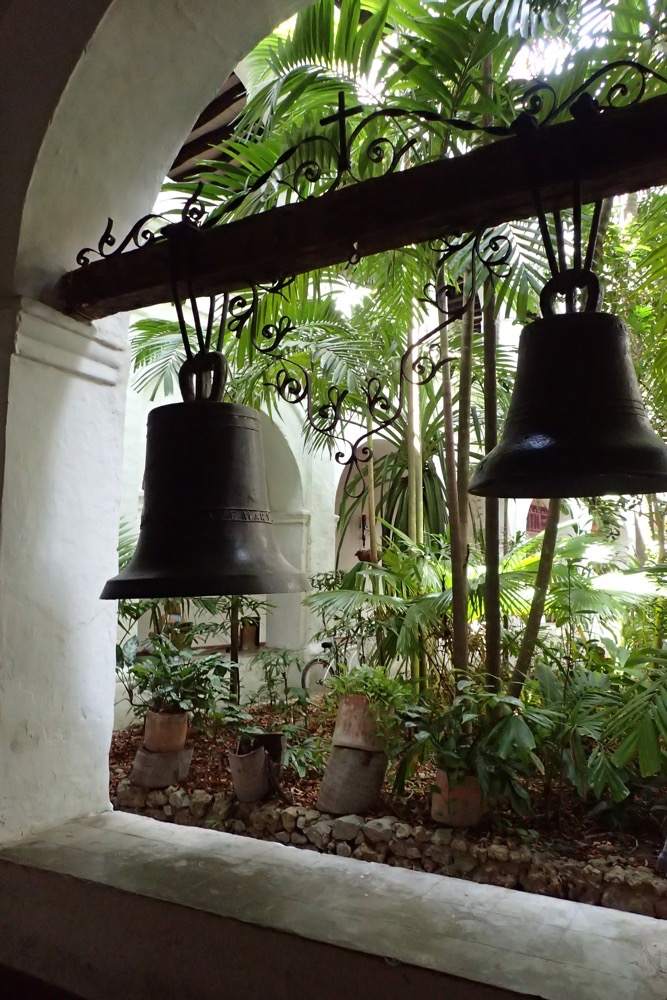 Many of these items in the Collection of Religious Art were created form the 16th to 20th centuries, being sacradotal in origin, many of the artists names were lost. These items have been either donated to the Jesuits or rescued by them when buildings were being destroyed for redevelopment.
Many of these items in the Collection of Religious Art were created form the 16th to 20th centuries, being sacradotal in origin, many of the artists names were lost. These items have been either donated to the Jesuits or rescued by them when buildings were being destroyed for redevelopment. 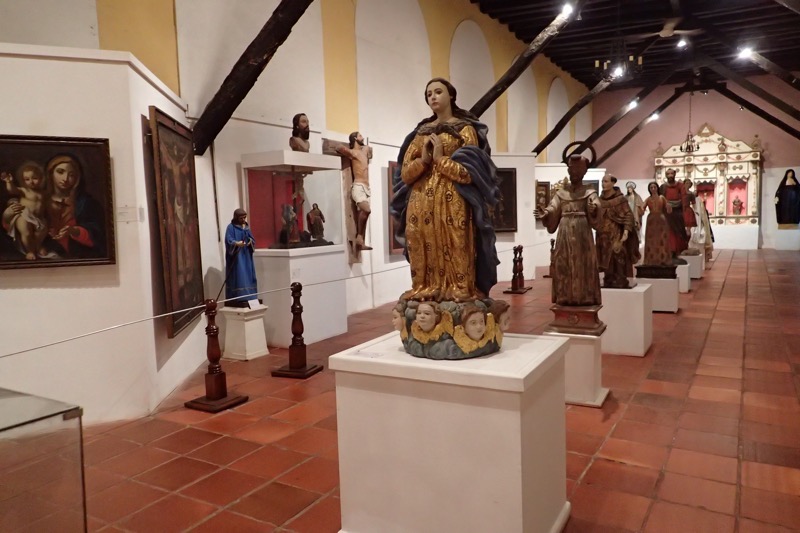 This altar is an example of what a modest chapel may contain – as compared to the impressive gold worked altar at La Popa. You can see a Freemason influence with the all seeing eye of God at the very top of the altar.
This altar is an example of what a modest chapel may contain – as compared to the impressive gold worked altar at La Popa. You can see a Freemason influence with the all seeing eye of God at the very top of the altar.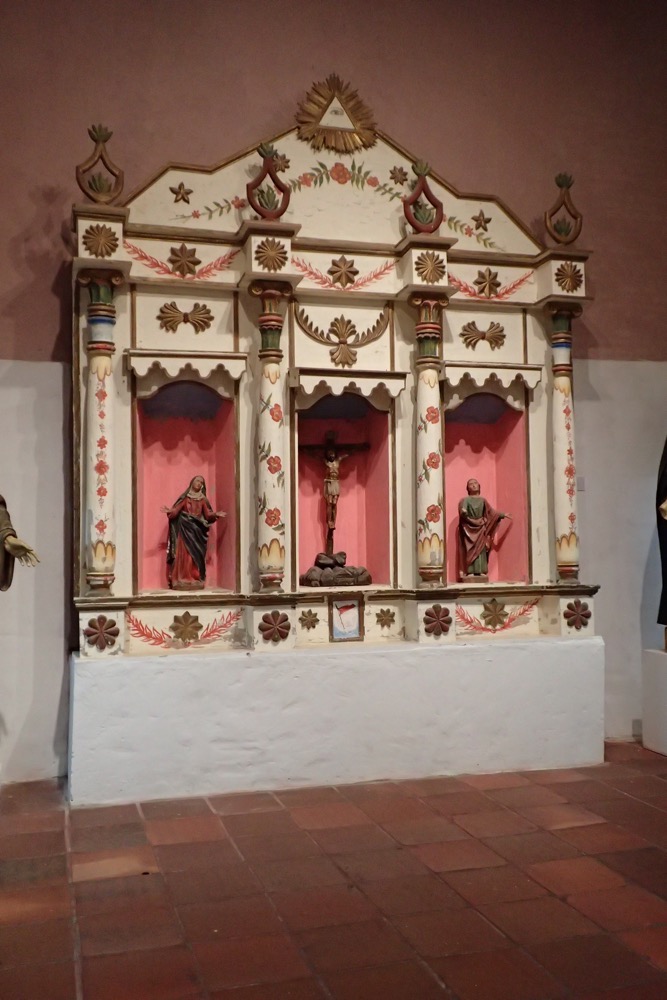 The ceiling at Monasterio de San Pedro Cláver.
The ceiling at Monasterio de San Pedro Cláver.
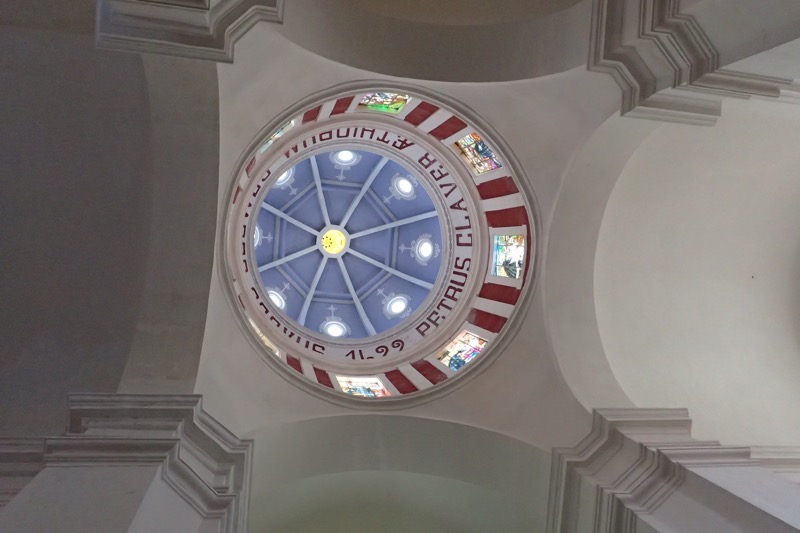 And the nave that contains the remains of San Pedro Cláver.
And the nave that contains the remains of San Pedro Cláver.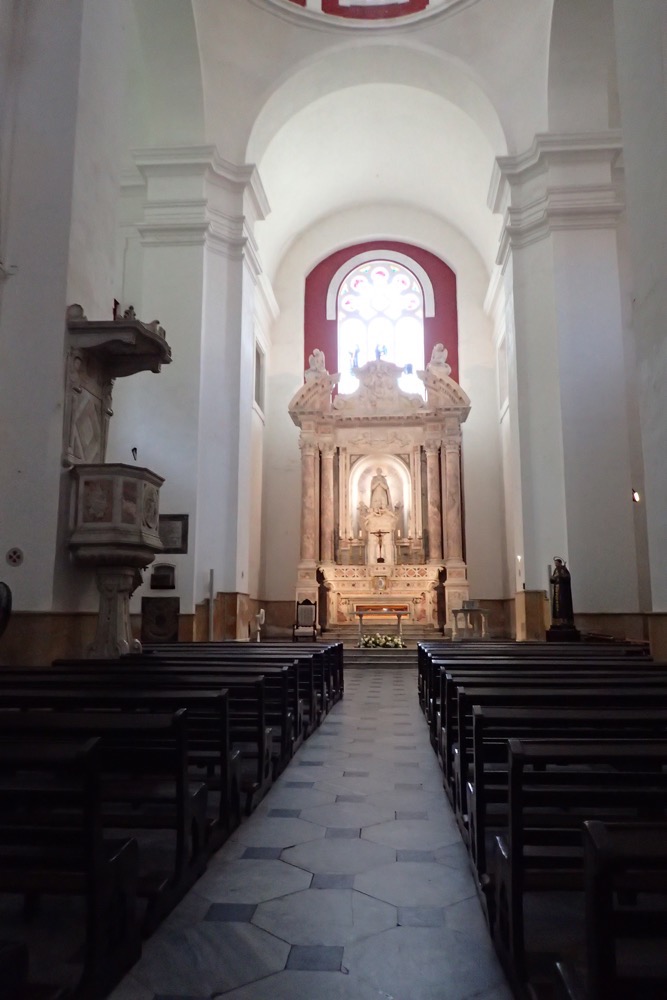 In the courtyard was some domestic macaws clambering all over the tourists. I have to say with those large talons and pointy looking beaks, I only held them momentarily and it was with some trepidation! I don’t trust birds. 😛
In the courtyard was some domestic macaws clambering all over the tourists. I have to say with those large talons and pointy looking beaks, I only held them momentarily and it was with some trepidation! I don’t trust birds. 😛 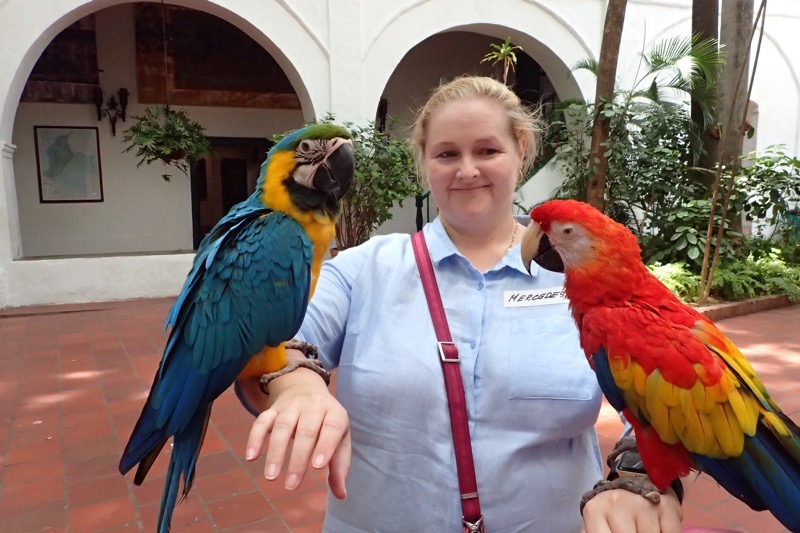
Our next stop on the walking tour was the Monument Torre del Reloj – which is also the largest slave square in the city. Cartagena owed much of its wealth and prosperity to the slave trade and it was here in this large square that slaves were brought to be traded and sold to wealthy land owners, and subsequently shipped off to other areas of the Americas.
Now the area houses many restaurants, cafes and art galleries.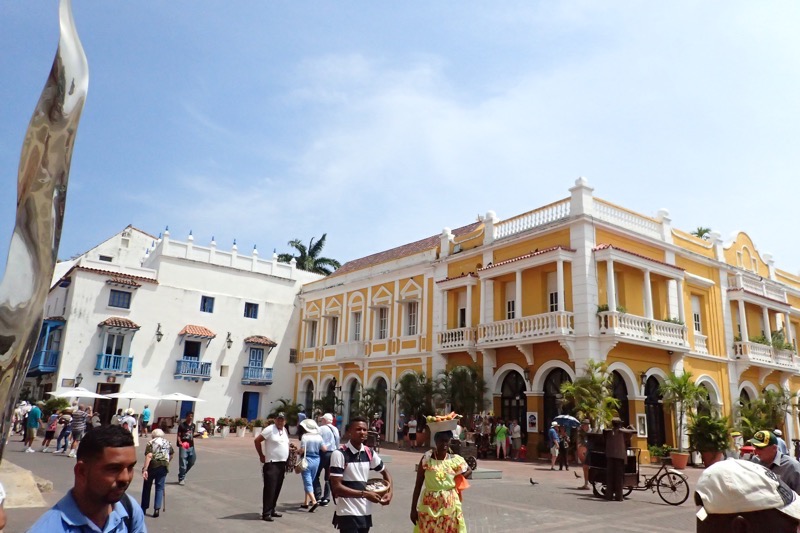
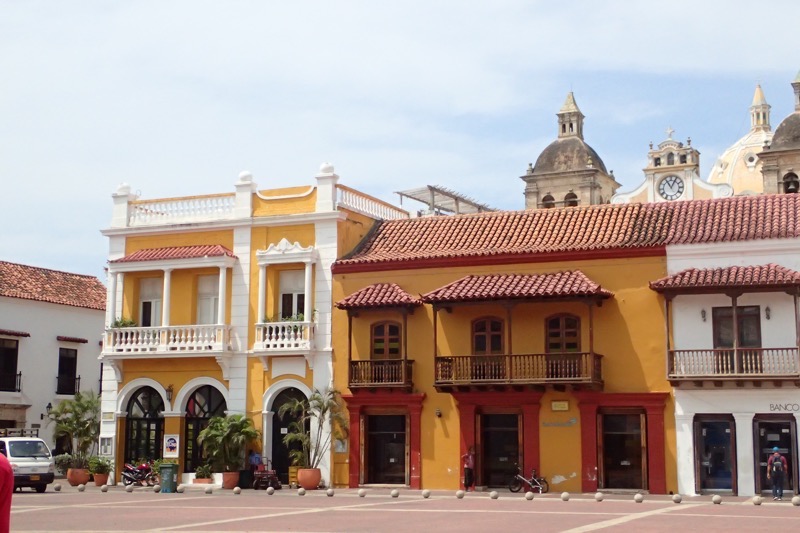
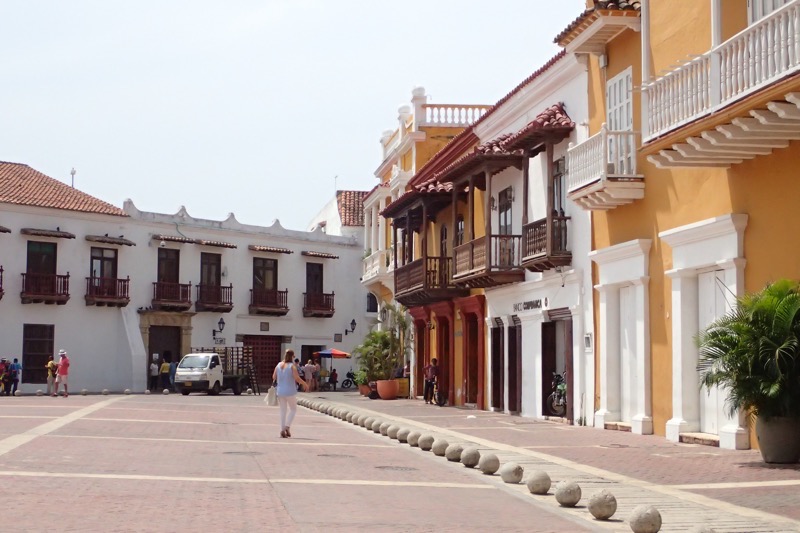
The Cruise Terminal at the Port of Cartagena has got the best set up I have ever seen at any cruise port – there is cafes, bars, a huge duty free shopping complex, a large aviary full of beautiful macaws, parrots, peacocks and even a flamingo habitat. They also have various monkeys and iguanas living in the area and animal keepers there looking after the animals (and the tourists!). It was a very pleasant welcome to the city.
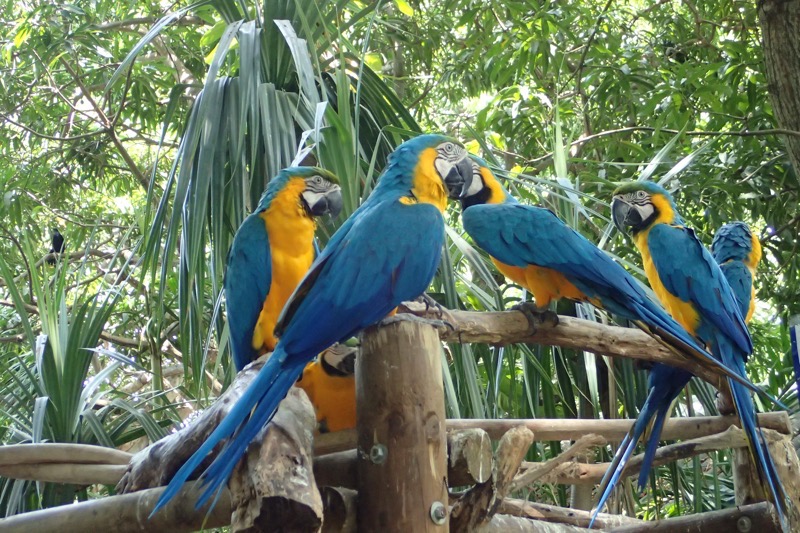
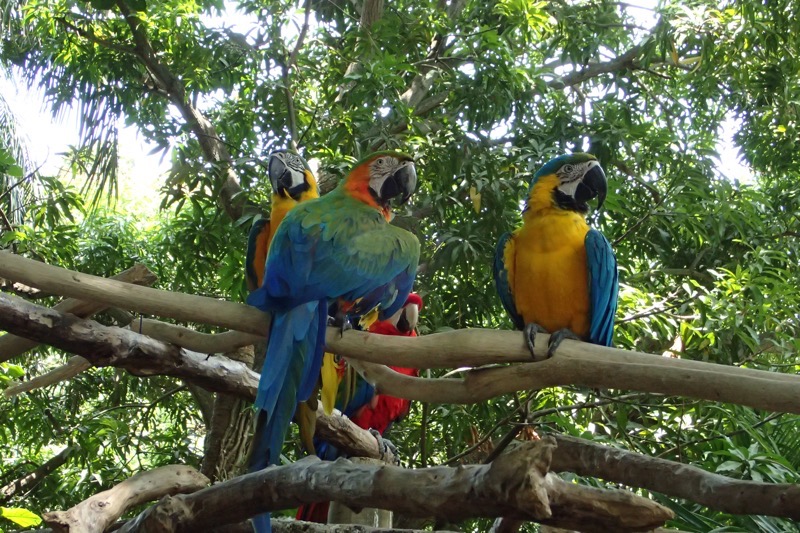
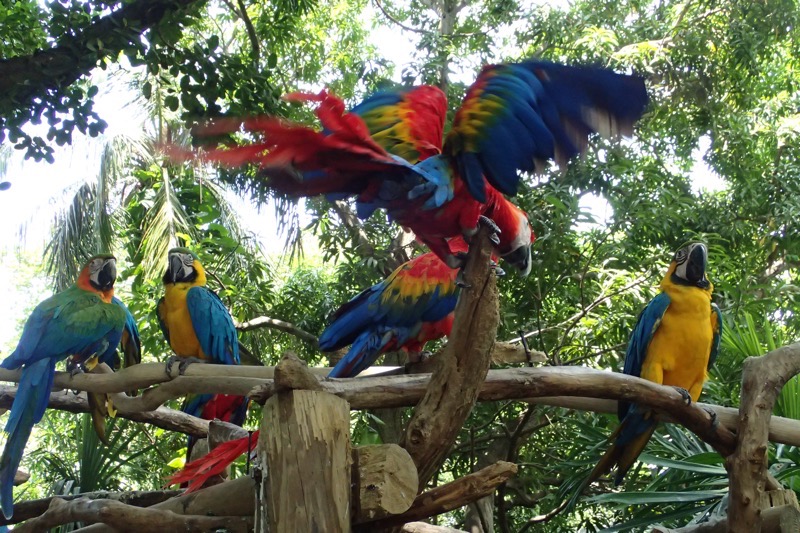
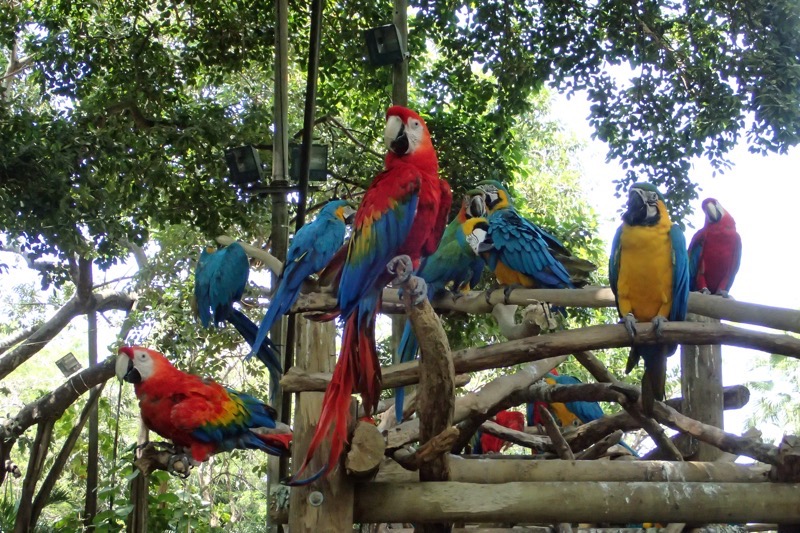
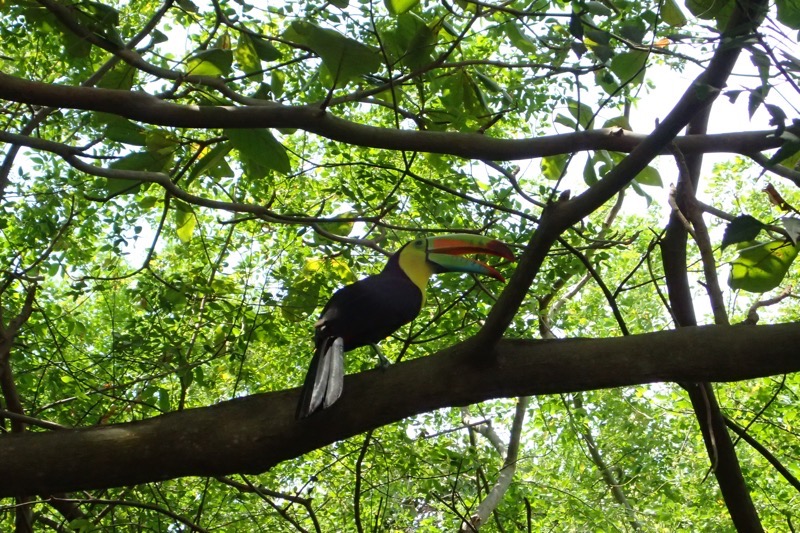
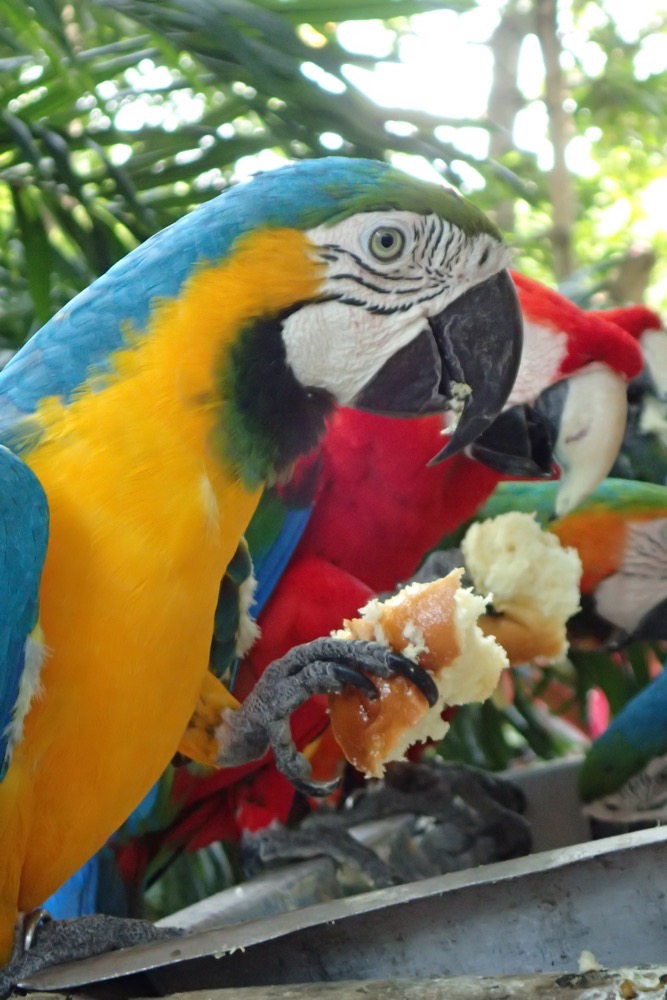
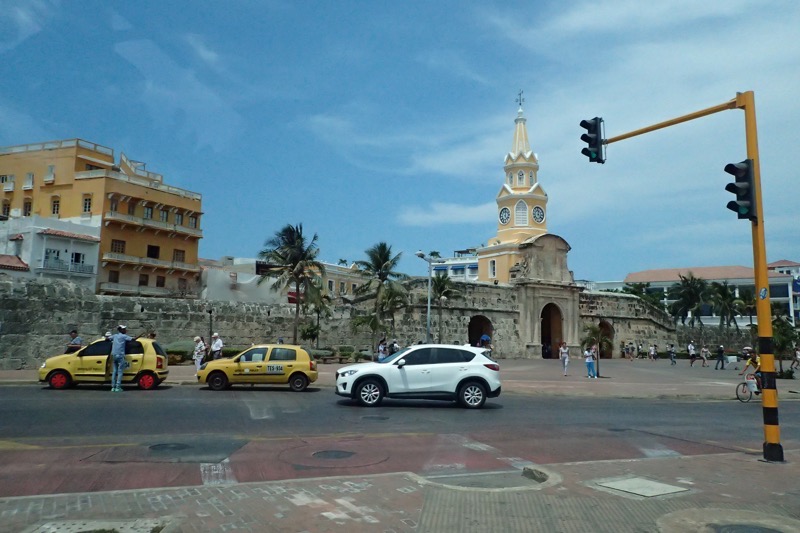
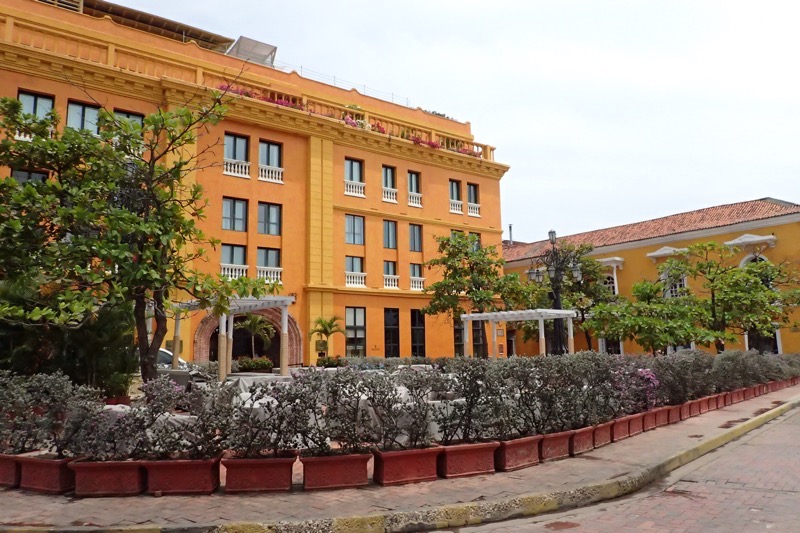
All up a fabulous day that ended with Happy Happy Hour with the Nookies – MIck and Marie, John and Kathleen, Terry and Sandra, Barry and Sandie and myself taking full advantage of happy hour drinks … which may not have been my best laid plan considering how dehydrated I was feeling after spending all day walking around in the very hot and humid conditions of Cartagena… but great company and interesting tales always seem to overcome annoying little things like logic, and four vodkas later, I was staggering back to my cabin – this might have been partially the result of the ship moving at nearly 20knots in the chop as we hightailed it towards the Panama Canal, but the vodkas certainly didn’t help with the feeling wobbly on my feet! 🙂
Cartagena is absolutely on my list of places to come and spend more time one day… Andres, if you are reading this – you must let me come to Columbia with you next time you are coming back! <3

Totally agree with your praise of the portside facilities in Cartagena. Wow, what a surprise on our visit there last year to see closeup all those beautiful birds and animals. Your detailed description brings back great memories of the colourful city.